Egypt has always been in my top 3 countries to visit ever since I was a kid. I did not know much about travelling back then neither that I would be a travel addict a couple of years later. But here I am in Egypt and to celebrate my 30th birthday in this great country with so much ancient history. I am so excited to tell you about my one-week trip to the land of the pharaohs and also some useful tips when while visiting to make you have an easy and smooth holiday.
Visa application
It is true that Mauritians prior our travel to Egypt we need a visa. This can be done at the Egyptian Embassy at Nexteracom Tower C, 6th Floor in Ebene. It will not take more than 3 days. Also, if you plan of going out of Egypt and come back again, make sure you ask for a multiple Visa entry rather than just a single entry. You will not be able to get in the country again on the same trip with a single Visa entry.
The cost of the Visa procedure cost Rs 970. Call on 468 17 22 for the documents you need to hand over for your Visa to be processed.
Local Currency: Egyptian Pound (EGP)
1 EGP is Rs 2.33
Capital City: Cairo
Language spoken:
Arabic and English
General rules:
• Keep small change for tips (you will be tipping a lot !!) W.C entrances for example
• Always negotiate the prices (whether it is in shops, at the market, or with Taxi drivers)as you will notice no prices are displayed. So, they will tell you the price they want. Note that you have to divide it by four or five to get an approximation of the real cost.
• Inform yourself well about the entrance tickets to any museum, temples or tombs. There is always an extra ticket to pay for some entrances. And if you are a student, do not forget to bring your student card with you as you will pay half of the entrance fees. (trust me, it will help you make a lot of savings if you plan to do most of the attractions)
• Taxis are great when doing a tour, else if it is to go to one place and back to your hotel, for example, use the UBER app.
• Drink from bottled water.
• If you have stomach problems avoid street foods
• Negotiate well for camel and horse rides at the Pyramids of Gizeh. Like they say “it cost EGP 10 to get on a camel and EGP 1000 to get off!!! “
If you follow the above-mentioned rules, everything will go smooth. And do not forget to have a blast of a time. Egypt is full of history and culture. Plus, the local food is so good and the people are so kind.
Entrances price for the Egyptian attractions for the year 2020 per person is as below:
Luxor Temple at EGP 160
Luxor Museum at EGP 140
Karnak Temple & open-air museum at EGP 200
Mummification Museum at EGP 100
Valley of the Kings at EGP 240
Medinet Habu Temple at EGP 100
Al-Deir Al Bahari Temple (aka the Hatshepsut Mortuary Temple) at EGP 140
Giza Plateau at EGP 200
Egyptian Museum Cairo at EGP 200
My Egyptian Itinerary:
Well, Egypt is so big and it has so much history all over, you would need about a solid month to do all of it. So, you will understand that within one week of travelling I had to choose where I would go. After much reading and watching documentaries, I opted for Cairo and Luxor, even if my wish was to go further down until Abu Simbel. It will be for another time, unfortunately.
LUXOR
We landed in Cairo and we flew straight to Luxor with a local airline and it is an hour flight. We stayed at the Karnak Mercure Hotel on the east bank.
See link for booking: https://www.booking.com/hotel/eg/karnak-luxor.fr.html
The Nile is the river that separates the west bank and the east bank of Luxor. I strongly suggest breaking your visit into two parts: one whole day where you would dedicate only to the east bank and another entire day for the west bank. This planning will avoid you going in all kinds of directions and optimize your visit.
I started with the east bank of Luxor as our hotel was on that side of the Nile. Most of the sites open at 8am so to make the most of our East bank tour we started early.
The east bank of Luxor:
1. The Karnak Temple and Open-Air Museum
We started with Karnak temple, the most beautiful temple I have seen in Luxor, the pillars are so gigantic that I felt like an ant close to it. The history behind the Karnak temple entirely made of sandstone is that it consists of four main parts, of which only the largest is currently open to the general public. The term Karnak often is understood as being the Precinct of Amun-Ra only, because this is the only part most visitors see. The three other parts, the Precinct of Mut, the Precinct of Montu, and the dismantled Temple of Amenhotep IV, are closed to the public.
One famous aspect of Karnak is the Hypostyle Hall in the Precinct of the god Amun-Re, a hall area of 5,000 m2 with 134 massive columns arranged in 16 rows. 122 of these columns are 10 meters tall and the other 12 are 21 meters tall with a diameter of three meters.
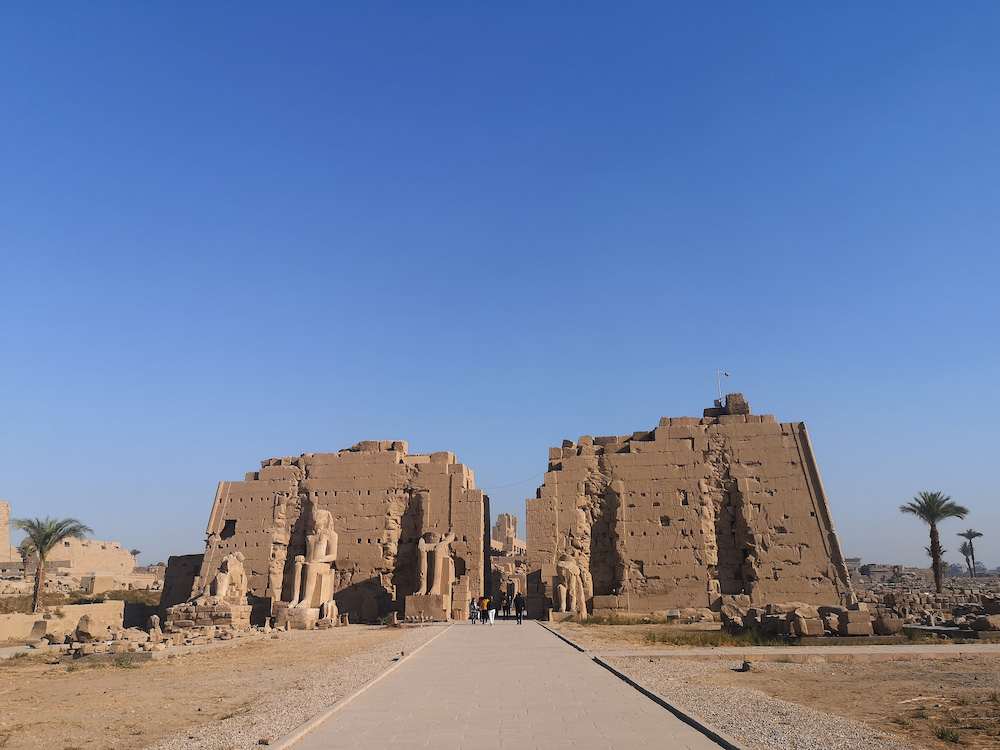
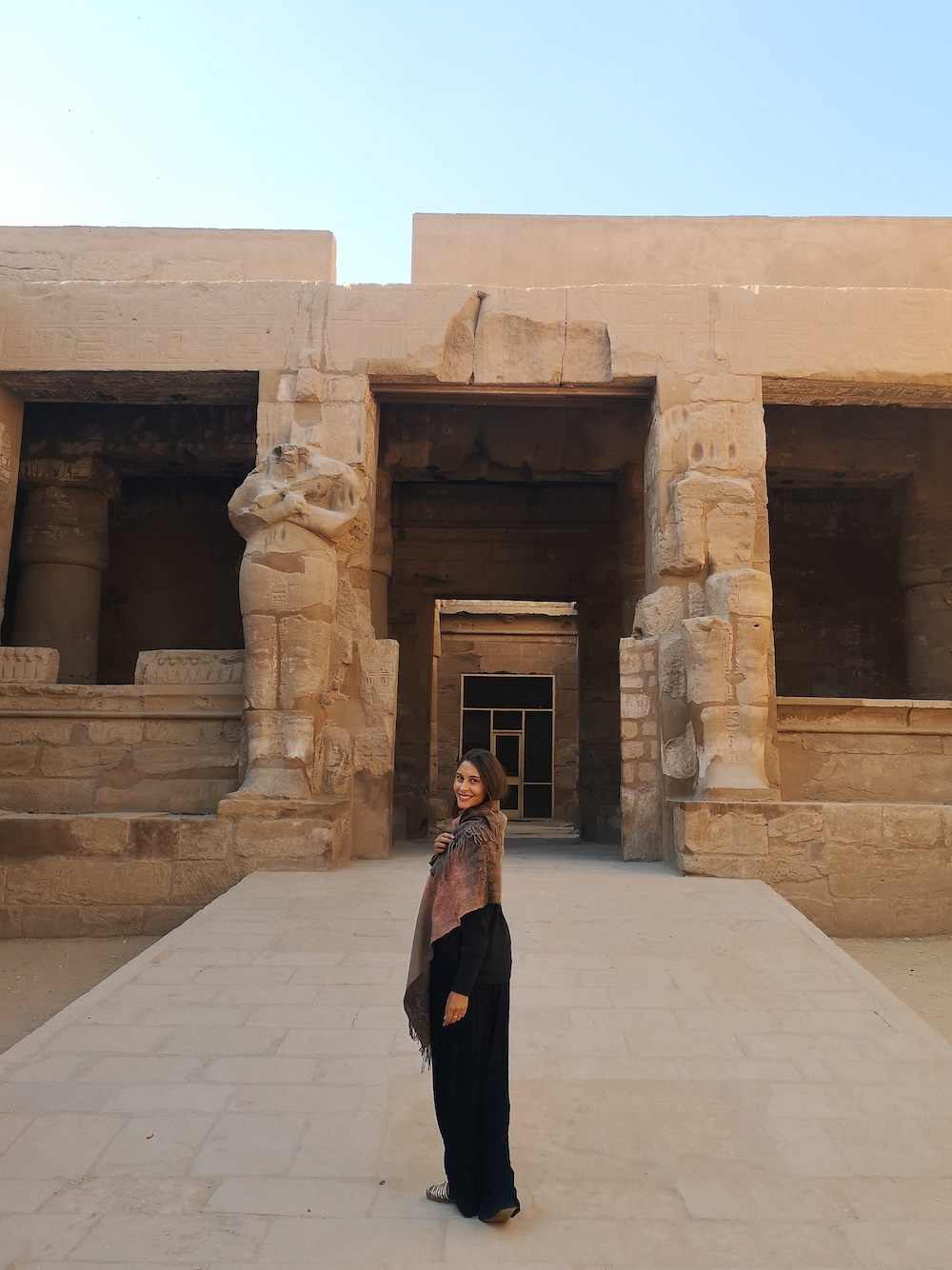

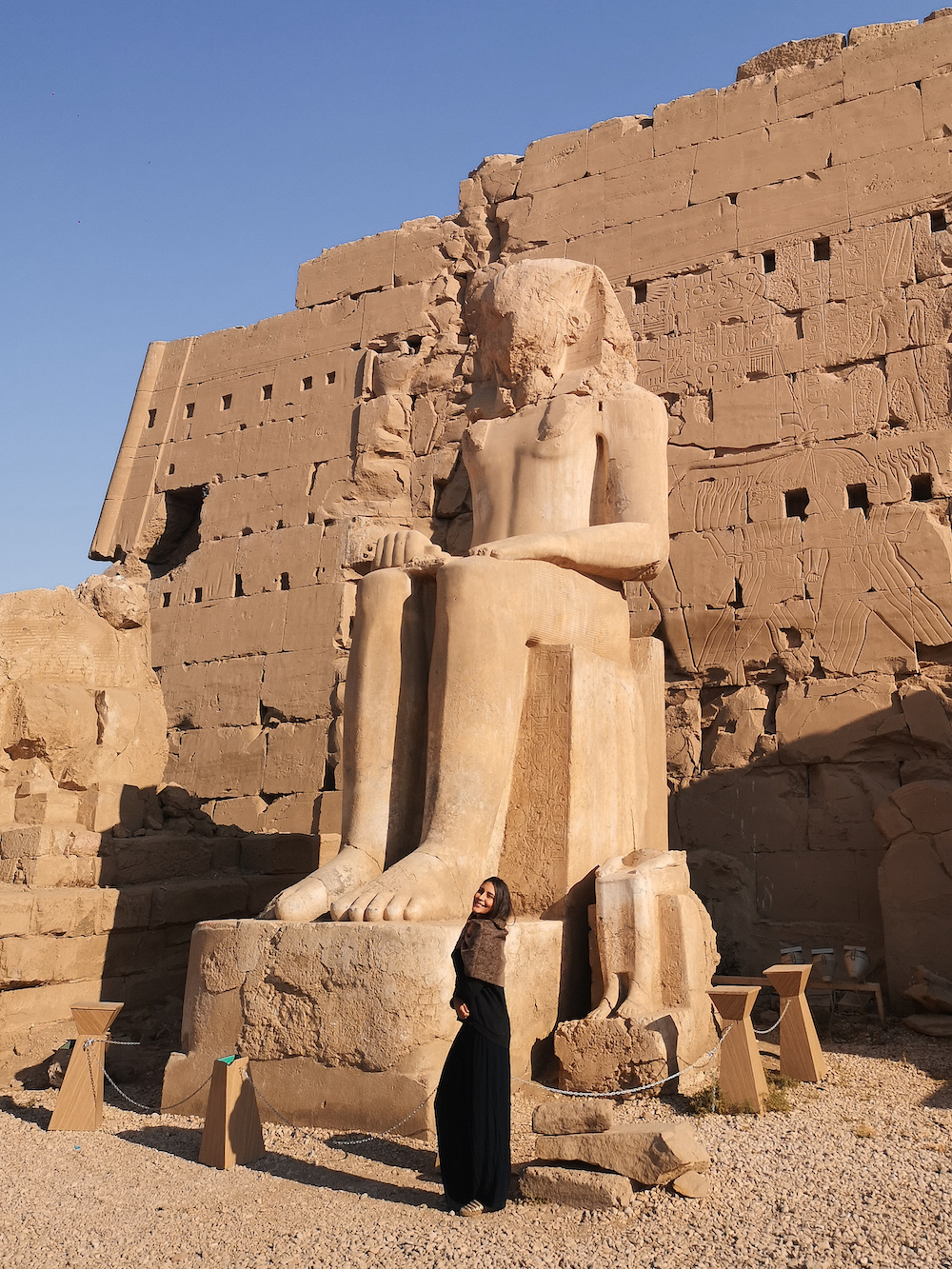
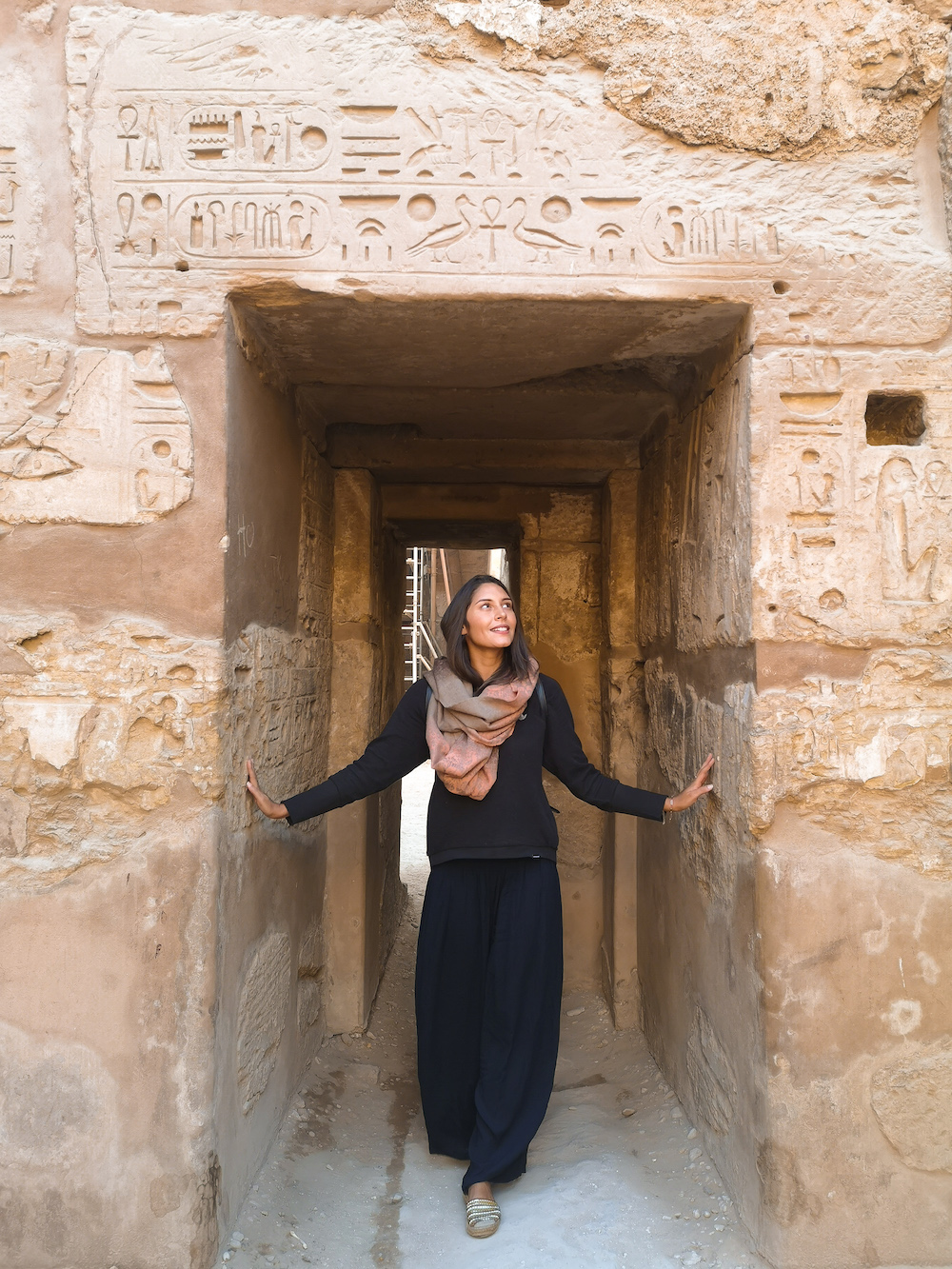
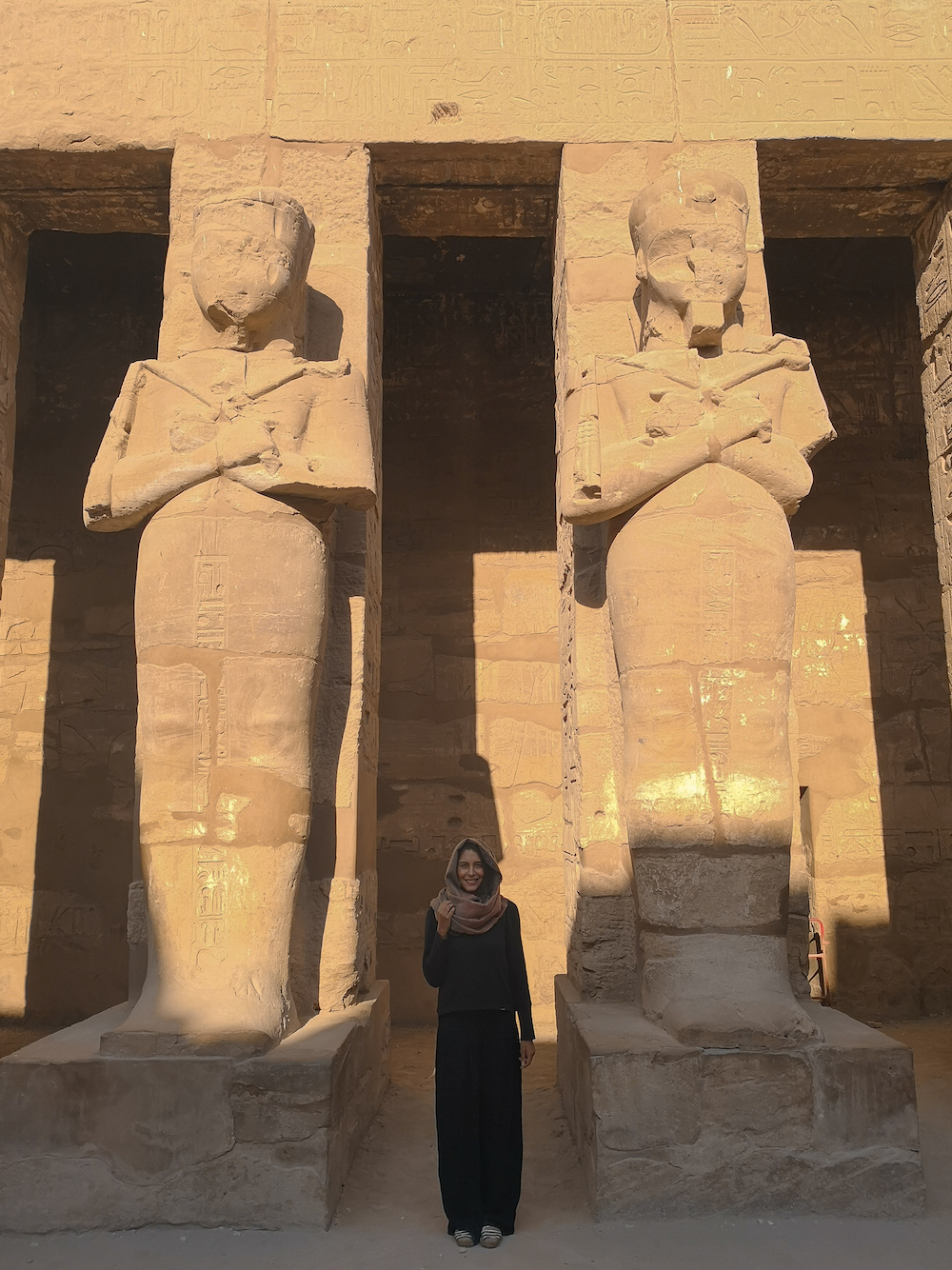
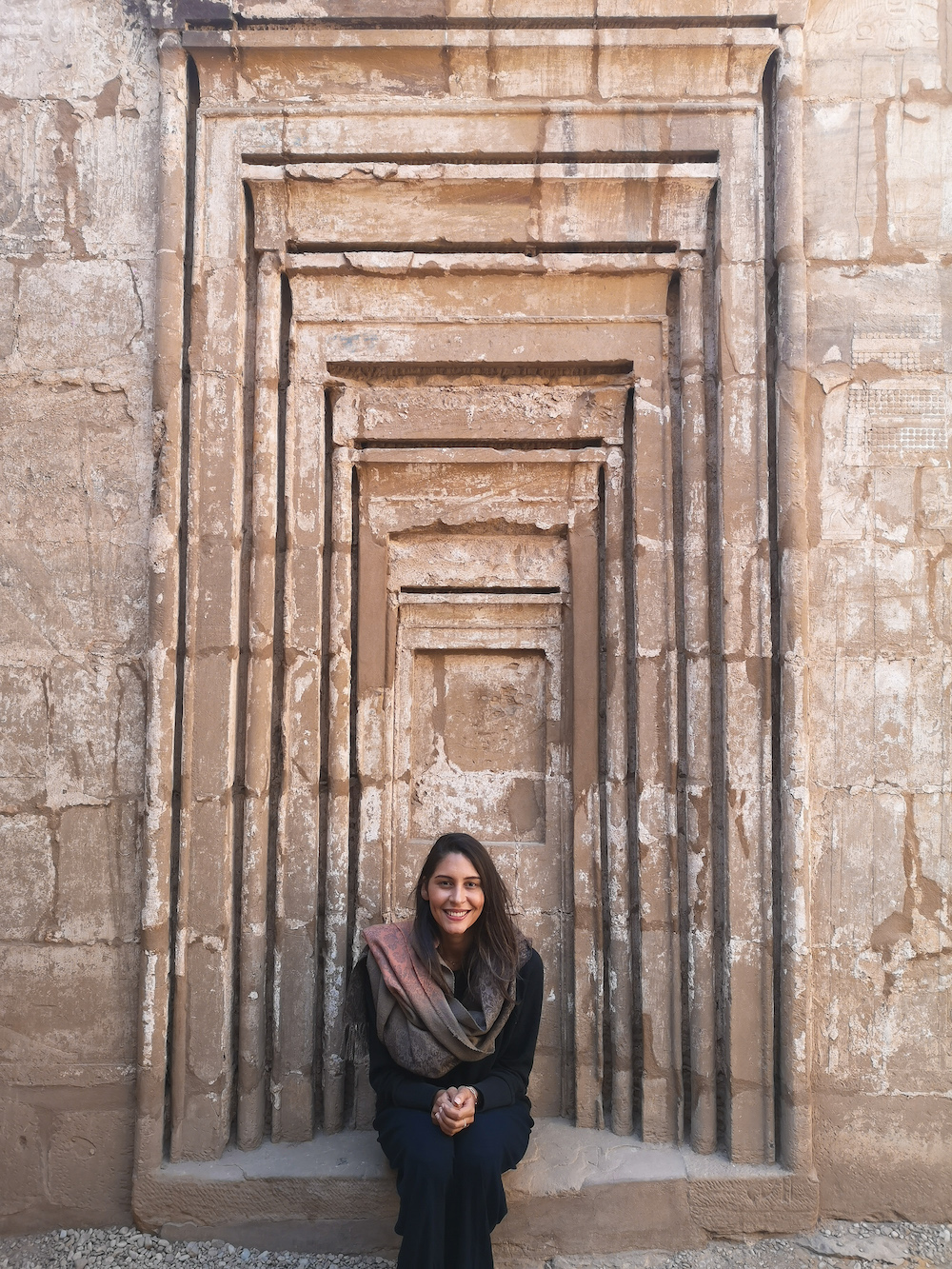
2. The Luxor Museum
After the Karnak Temple, you can take a taxi to take you to the Luxor Museum and from there you can do the rest on foot, they are all within walking distance (the Luxor Museum, the Mummification Museum and the Luxor Temple)
The Luxor Museum covers the history of the New Kingdom. Among the items on display, there are grave goods from the tomb of the 18th dynasty pharaoh Tutankhamun and a collection of 26 New Kingdom statues that were found buried in the Luxor statue cache in the nearby Luxor Temple in 1989. You will also find the royal mummies of the two pharaohs – Ahmose I and Ramesses I that are put on display in the Luxor Museum.
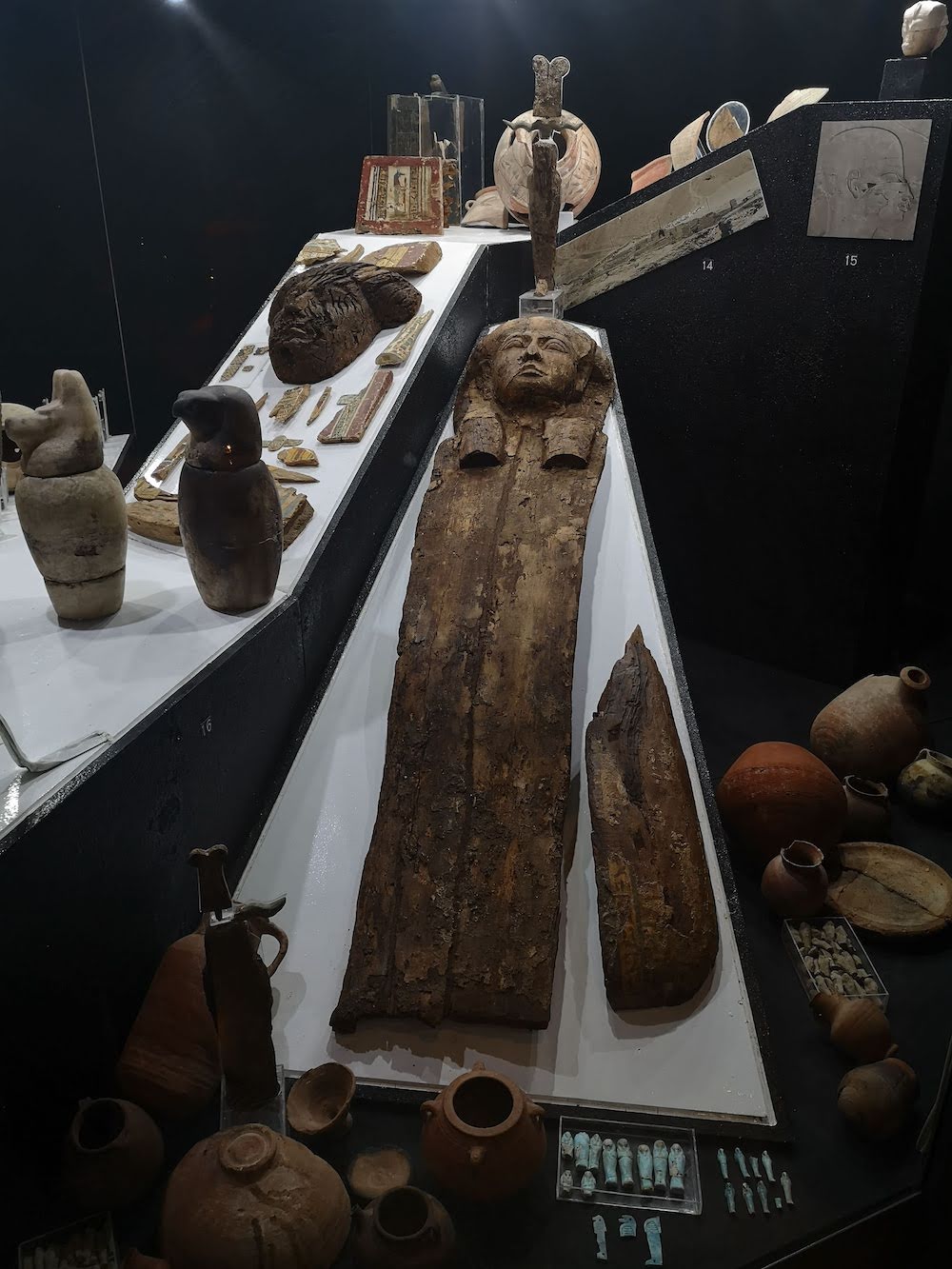
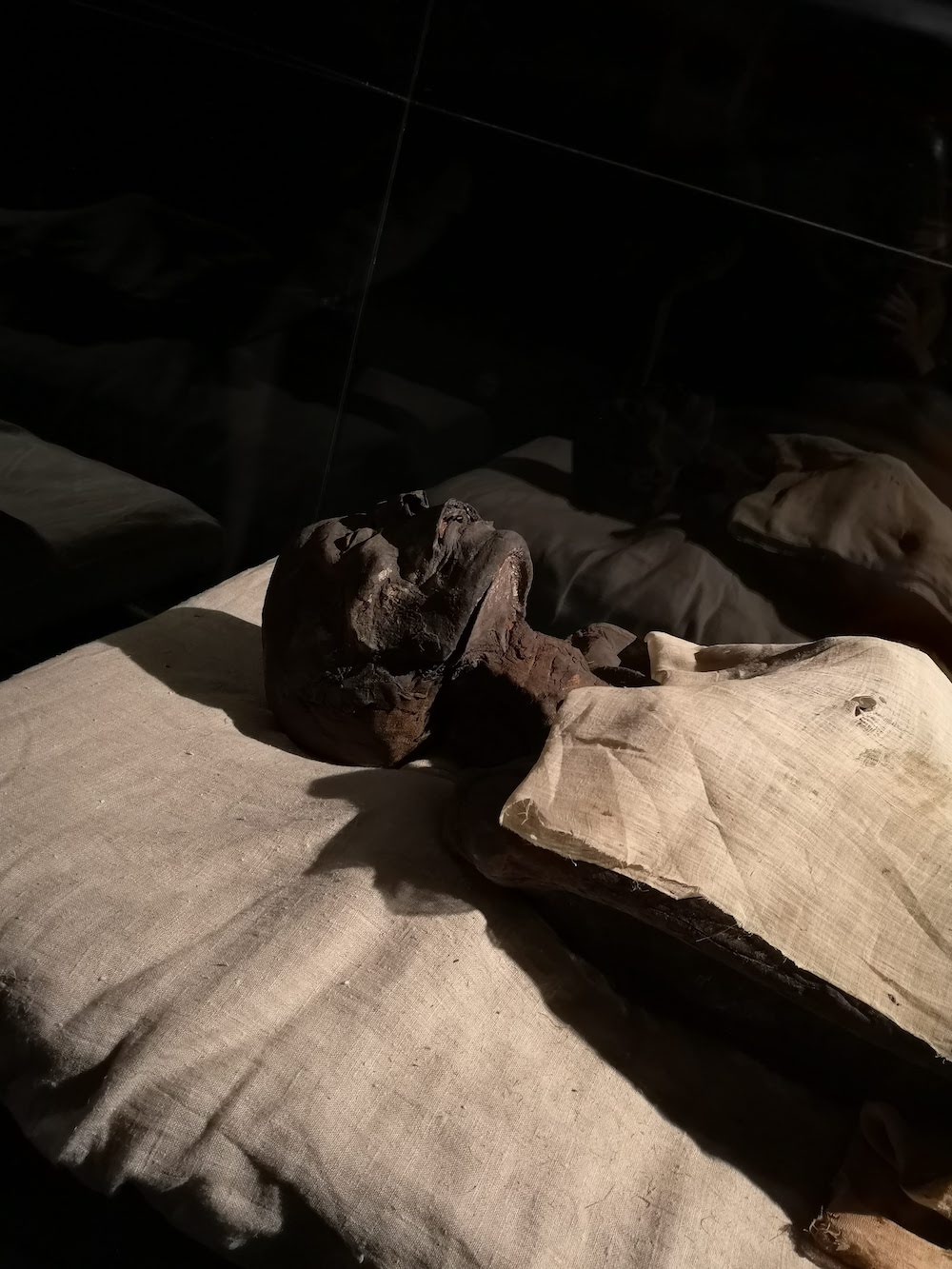

3. The Mummification Museum
Now if you are a museum enthusiast, I recommend doing the Mummification Museum which is like 10 mins walk from the Luxor Museum. It is a museum entirely dedicated to the mummification process from the dead body until it is put in a tomb.
You will find the tools used for mummification, how the brains were removed and replaced by linen cloth covered with resin, also how the organs were removed and put in the Canopic jars to preserve the viscera of the deceased after they were mummified. Each jar is protected by one of the 4 Sons of Horus:
The Liver (Imesti, with a human head)
The intestines (Qebehsenuf, a Falcon’s head)
The Stomach (Duamutef, Jackal’s head)
The Lungs (Hapy, Baboon’s head)
You will also find a series of coffins cover and their cache made of wood or metal. The ancient Egyptian believed in life after death. There is a model of a funerary boat used to transport the deceased to the west bank of the Nile where, in most cases, the ancient Egyptians buried his dead. This sort of model was placed in the tombs or depicted on their walls because every Egyptian should once in his lifetime, or after his death, use the boat to go on a pilgrimage to Abydos where Osiris, the god of other world was buried.
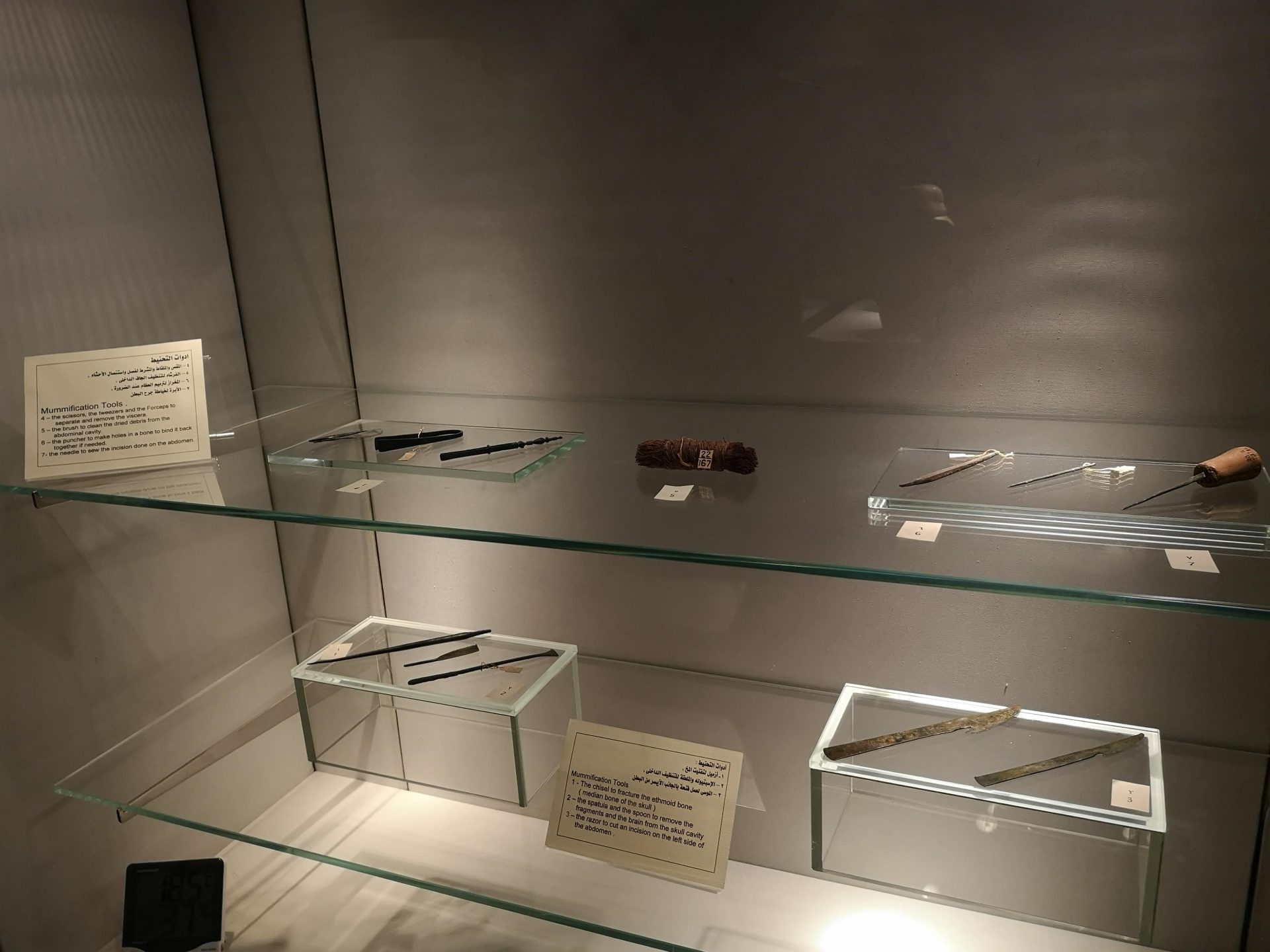

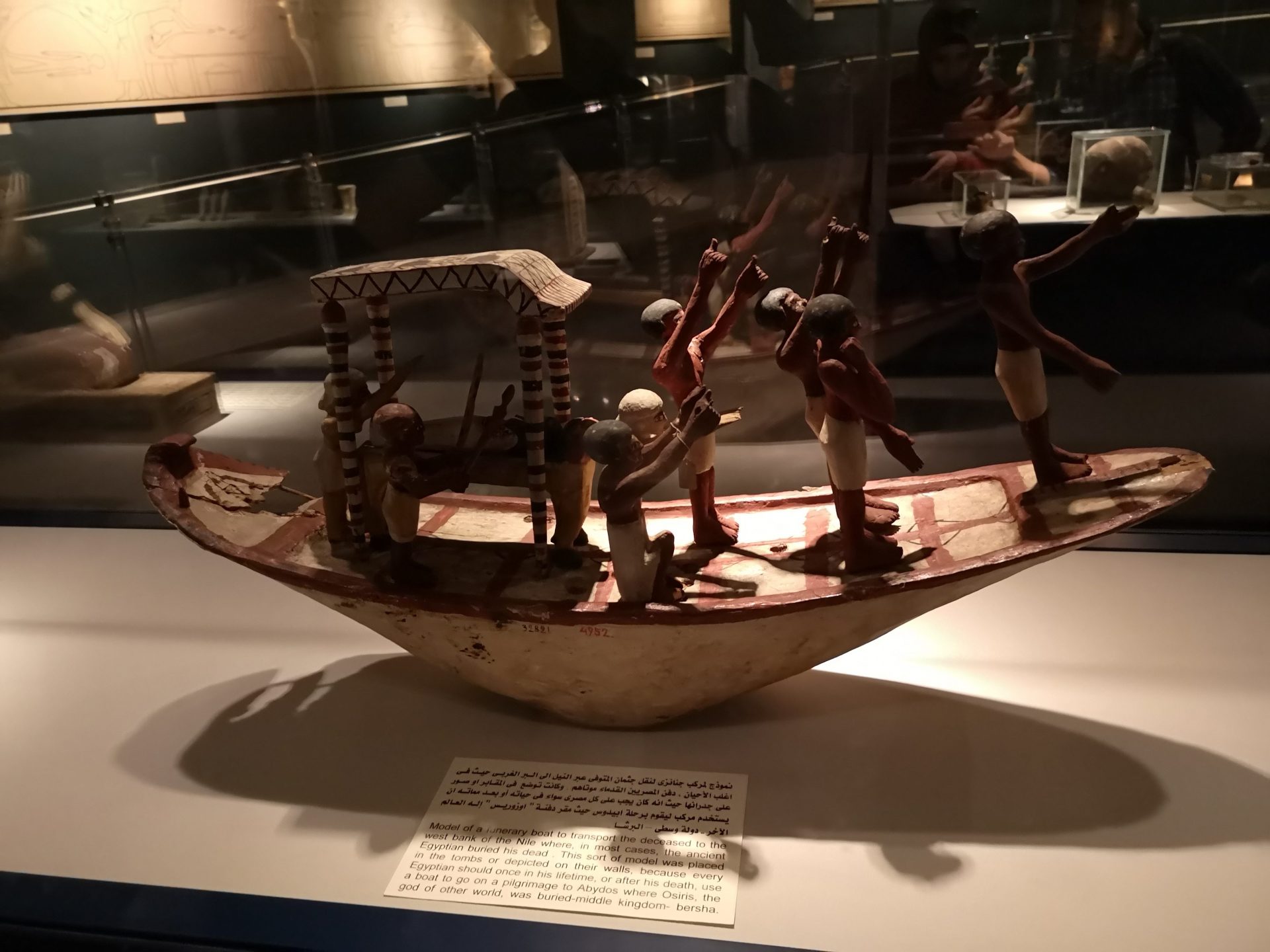
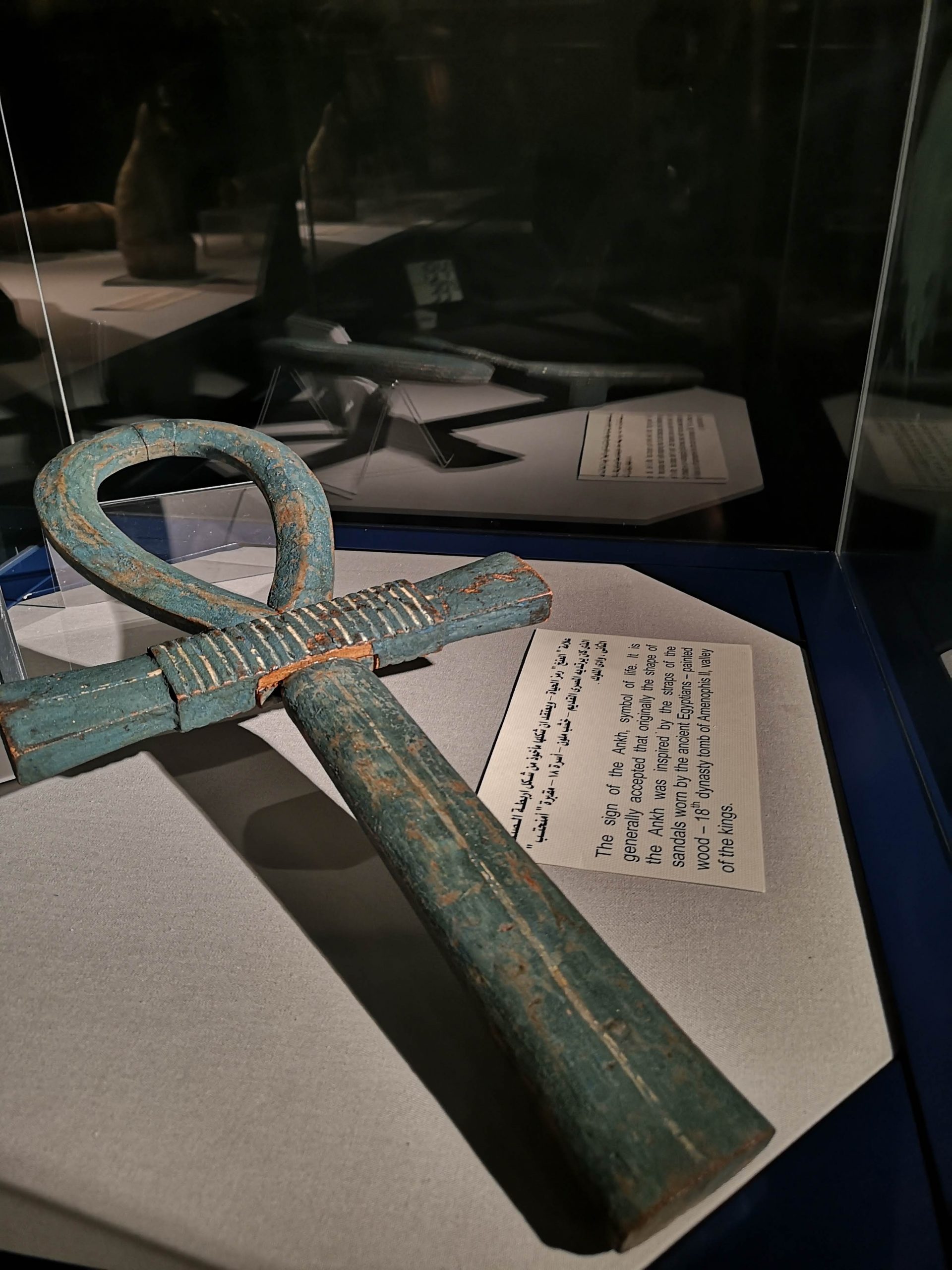
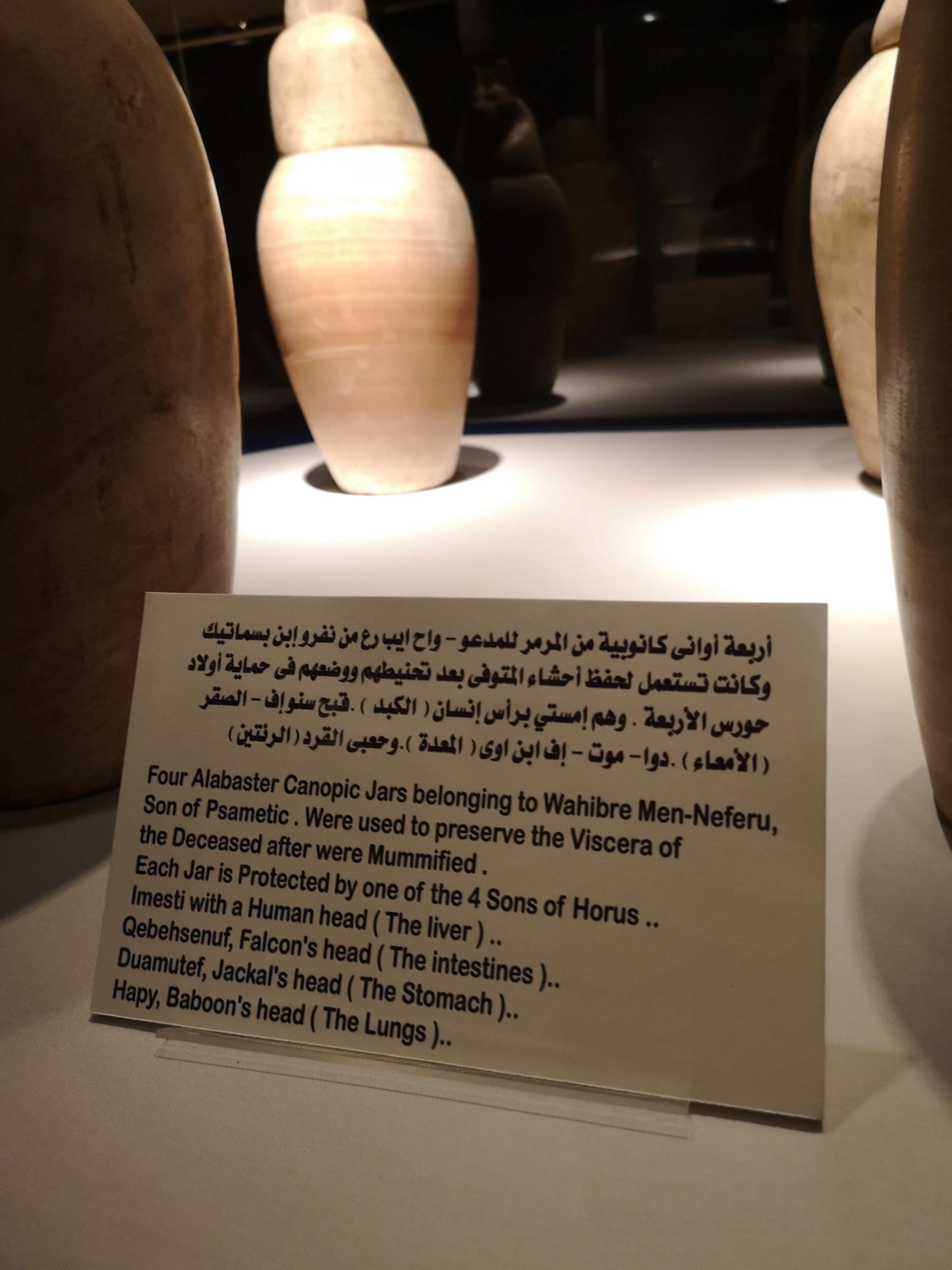
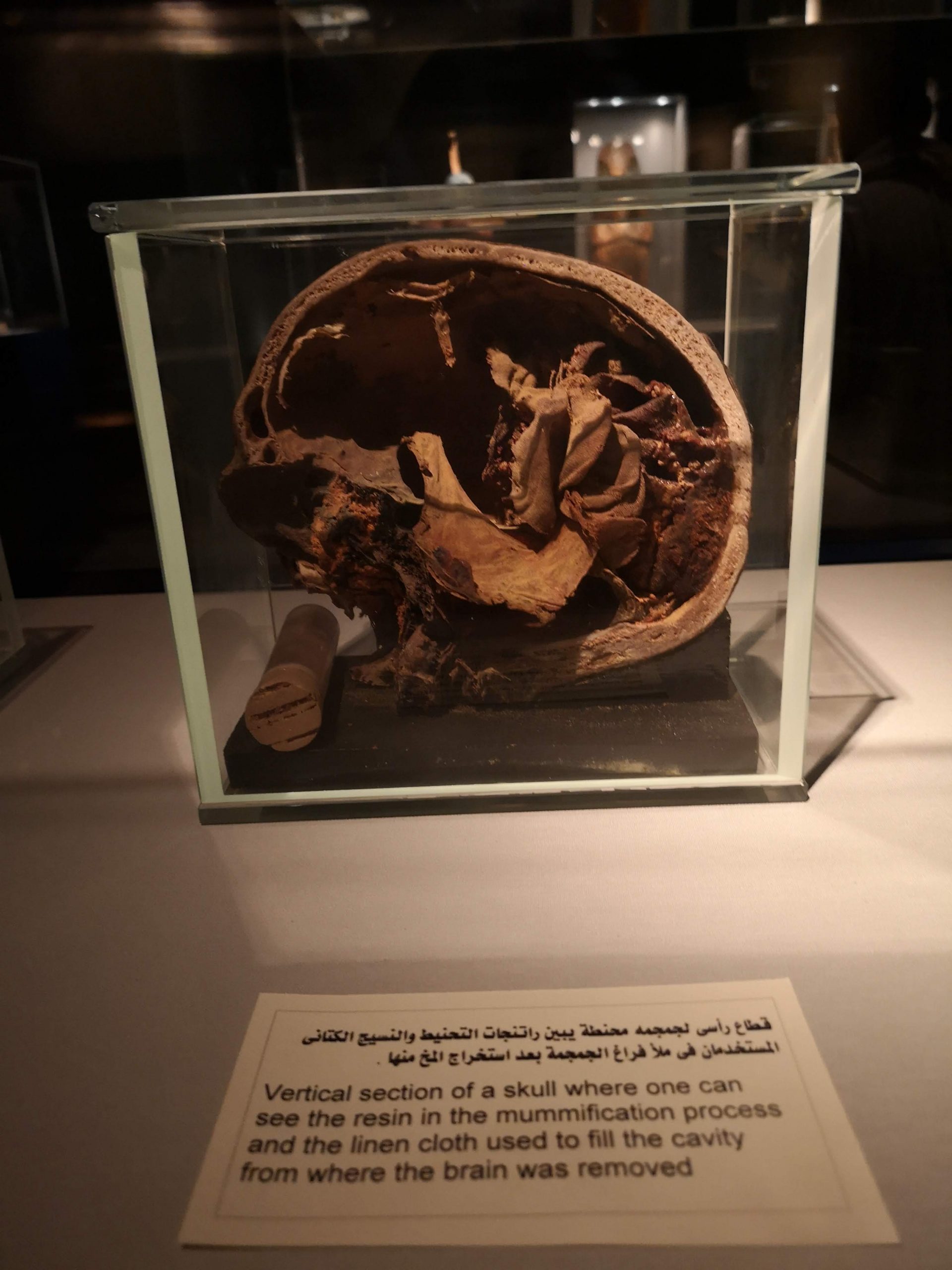
4. Luxor Temple
From the Mummification Museum, the Luxor Temple is another 10 minutes’ walk. The best time to walk through the temple is at sunset hour, where you can see the rays of light through the pillars. It is just magical.
The Luxor temple was constructed over hundreds of years by Amenhotep III, Ramses II, Tutankhamun and other Pharaohs. Luxor was the largest and most significant religious centre in ancient Egypt. It was then Thebes, Luxor Temple was the place of the First Occasion”, where the god Amon experienced a rebirth during the pharaoh’s annually reenacted coronation ceremony. Today remains of this vast complex include the colossal Great Colonnade Hall, almost 61 meters long, with 28 twenty-one-foot-high columns, its decoration largely undertaken by Tutankhamun around 1330 BC.
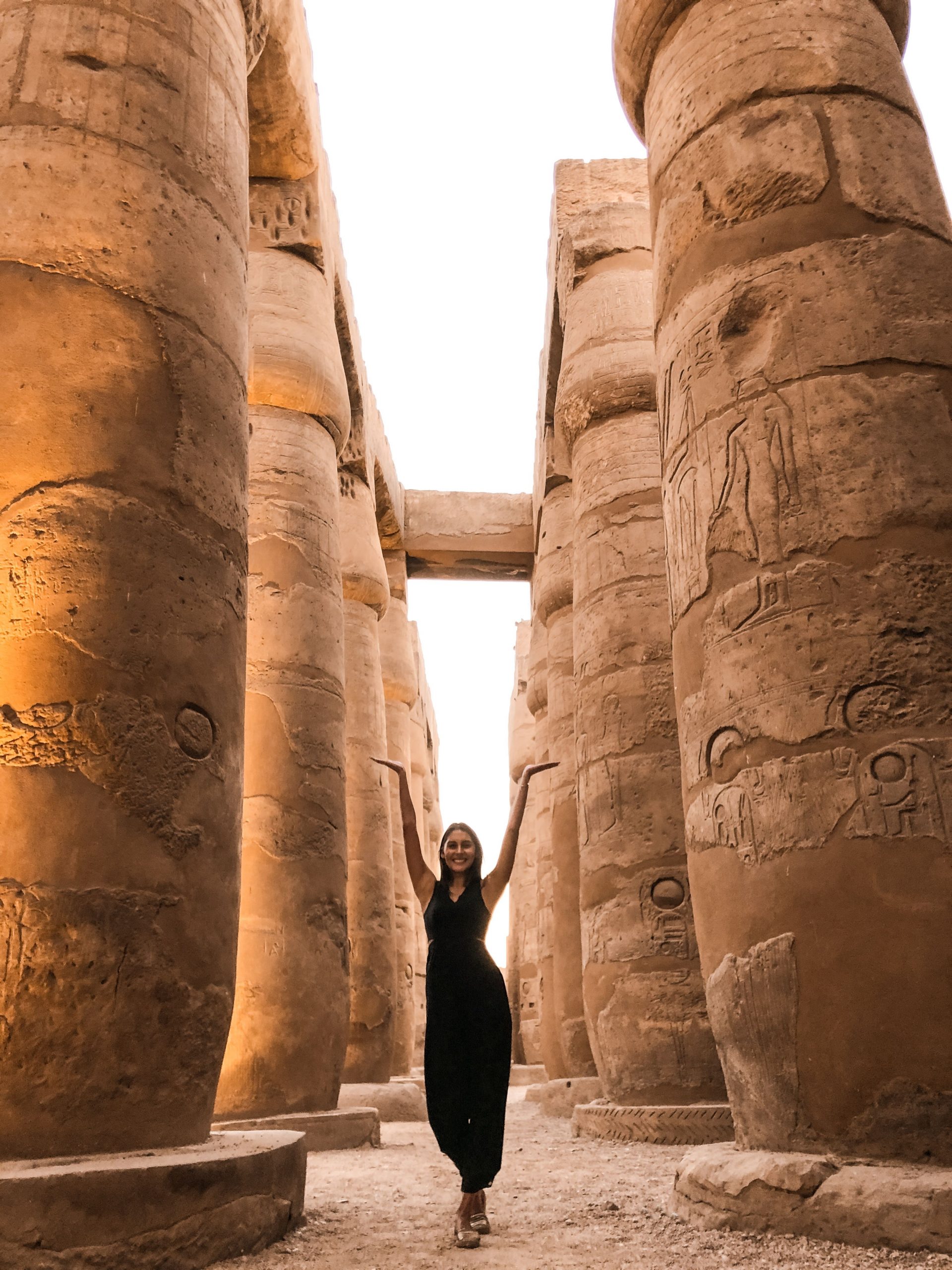
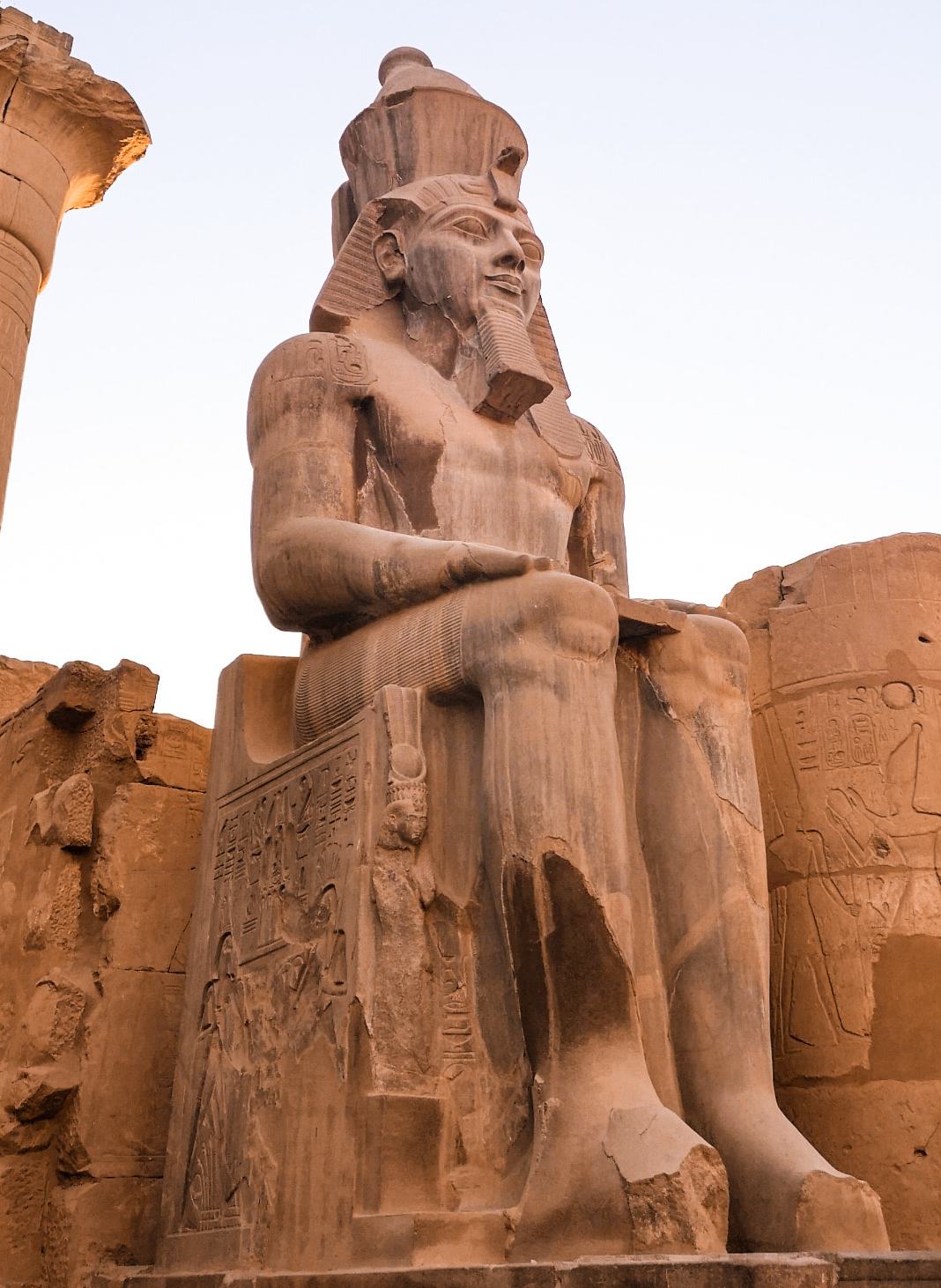
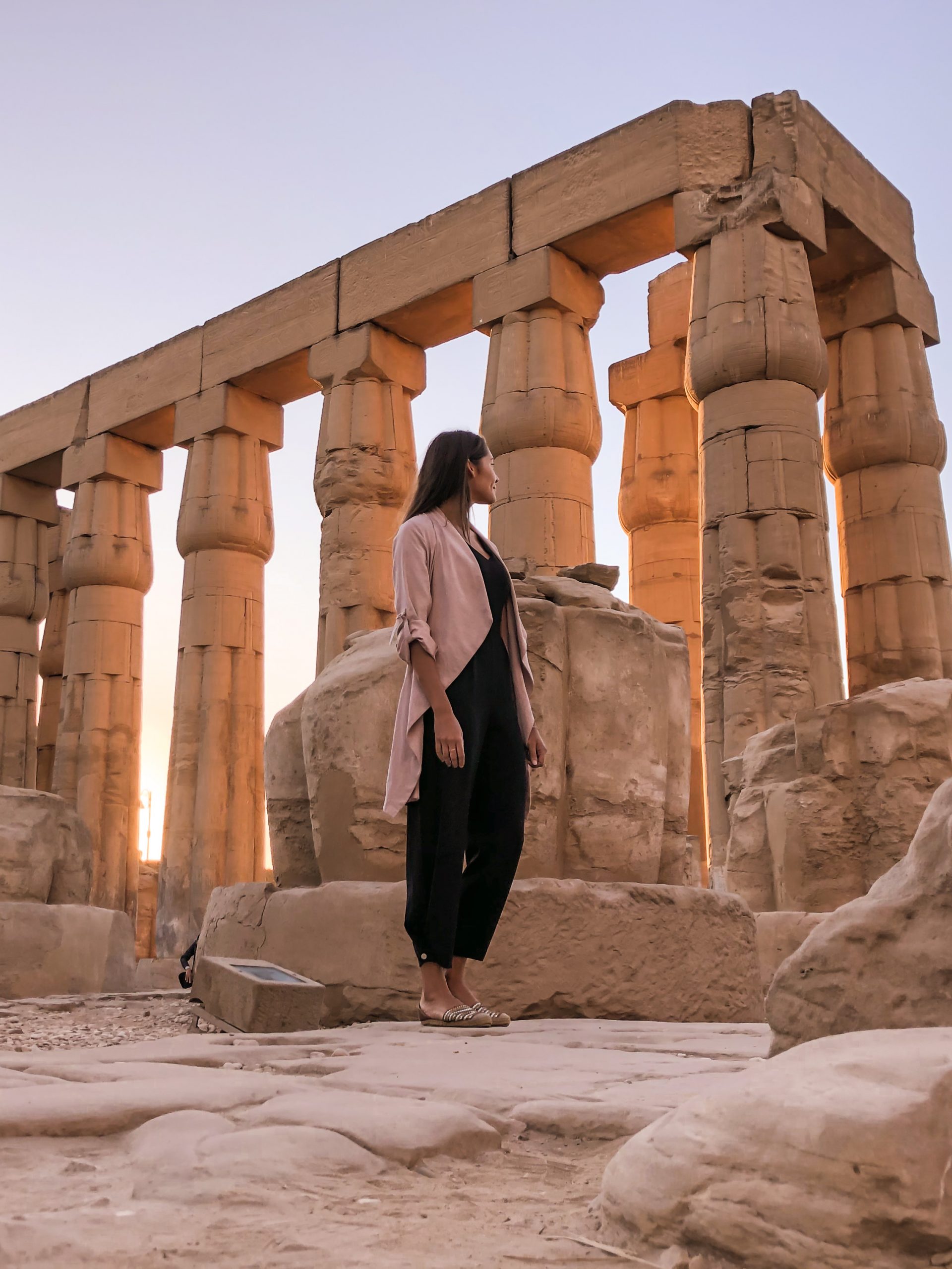
The west bank of Luxor
The west bank of Luxor is undeniably the most important holding of the ancient Egyptian history with the Valley of the Kings. Also, it is the best place to buy souvenirs for your friends and family in any of the alabaster factories at a good price, still do not forget to negotiate on the price.
Like I mentioned before, an entire day must be dedicated to the west bank alone. And the proper Itinerary would be to start from the Valley of the Kings, then to Queen Hatshepsut Temple also known as Temple of Deir al-Bahri and finish with the Medinet Habu.
Let’s see all of the mentioned in details.
Valley of the Kings
The valley of the Kings was the final resting place for the kings of the 18th,19th and 20th dynasties. There, you can visit the tombs of the kings and see the vivid wall paintings and the various chambers they had in their tombs. The decorations on the walls and ancient Egyptian tombs were created by the most artistic and creative people who existed at that time.
Since it was believed that the dead man accompanied by the sun god sailed through the underworld at night in a boat, the walls of the tombs were decorated with texts and scenes depicting this voyage and giving the dead man instructions on its path.
The regular entrance ticket allows you to visit only 3 tombs out of 63 tombs and Tutankhamun tomb, for example, is an extra ticket as well as some other tombs.
We were recommended by a local guide to visit these tombs below: Ramses III, Ramses IV, Ramses VI and Tausert and Seth Nakht No 14. These were the most intact tombs in terms of the wall paintings and were big in size.
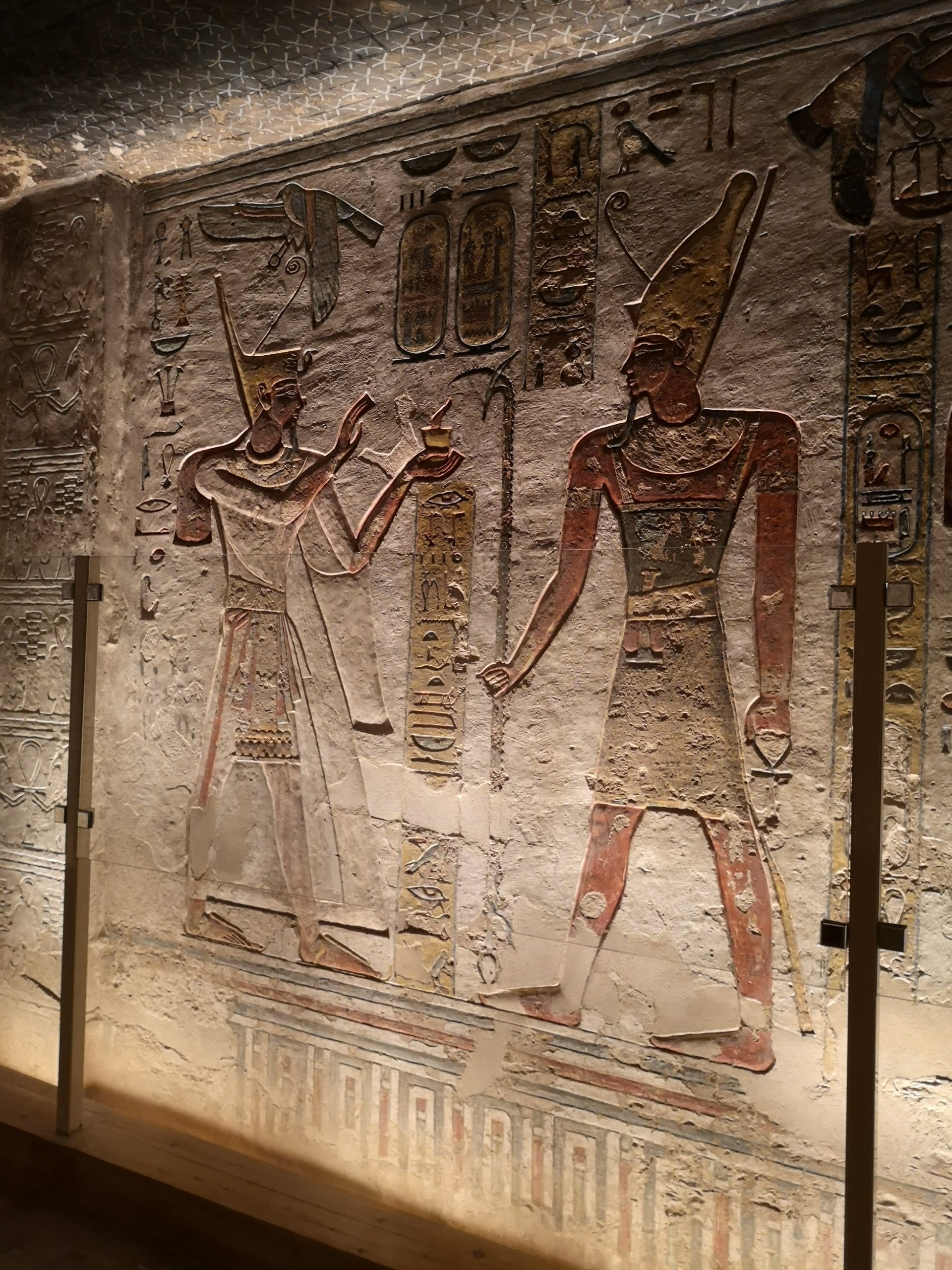
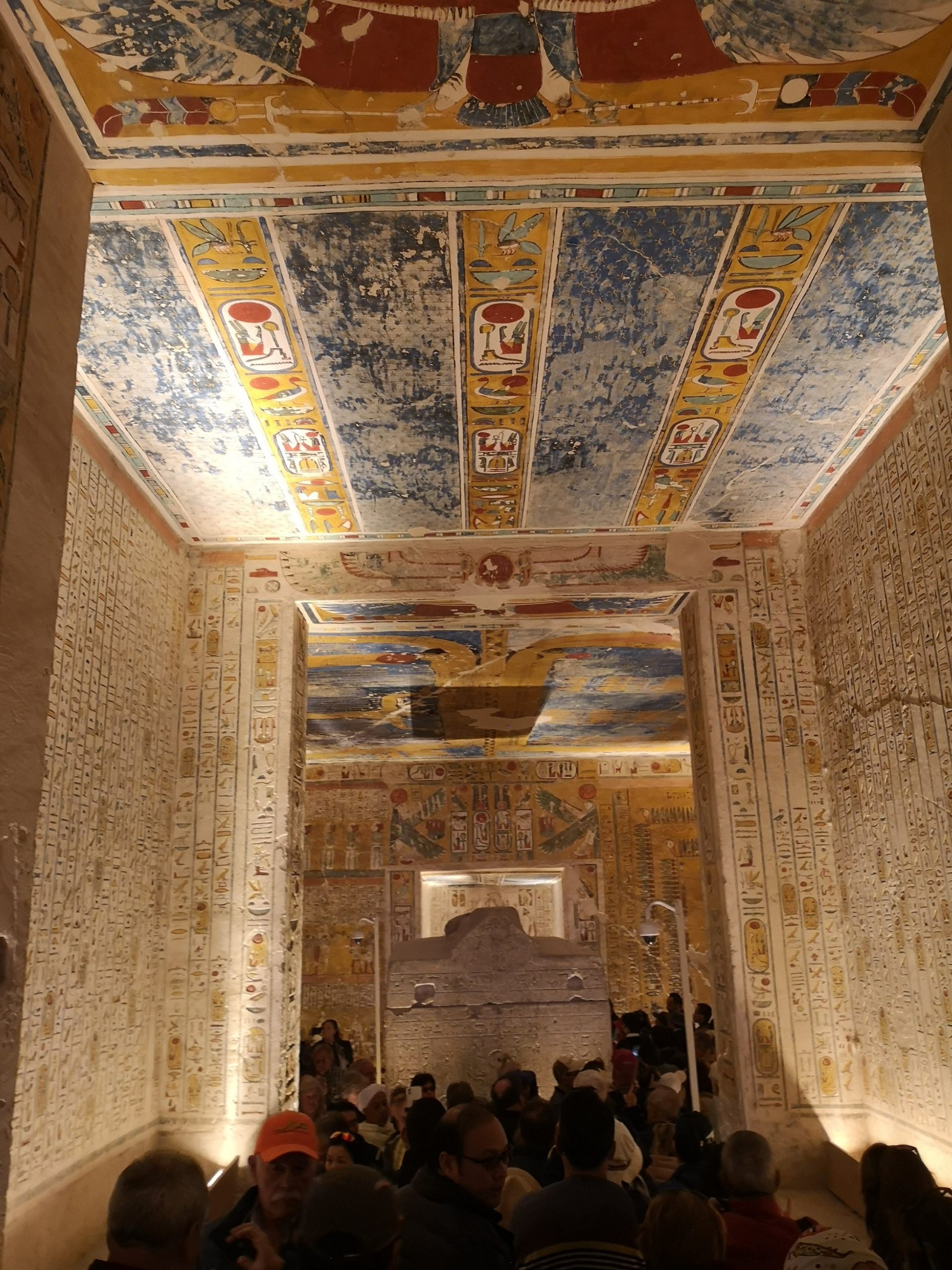
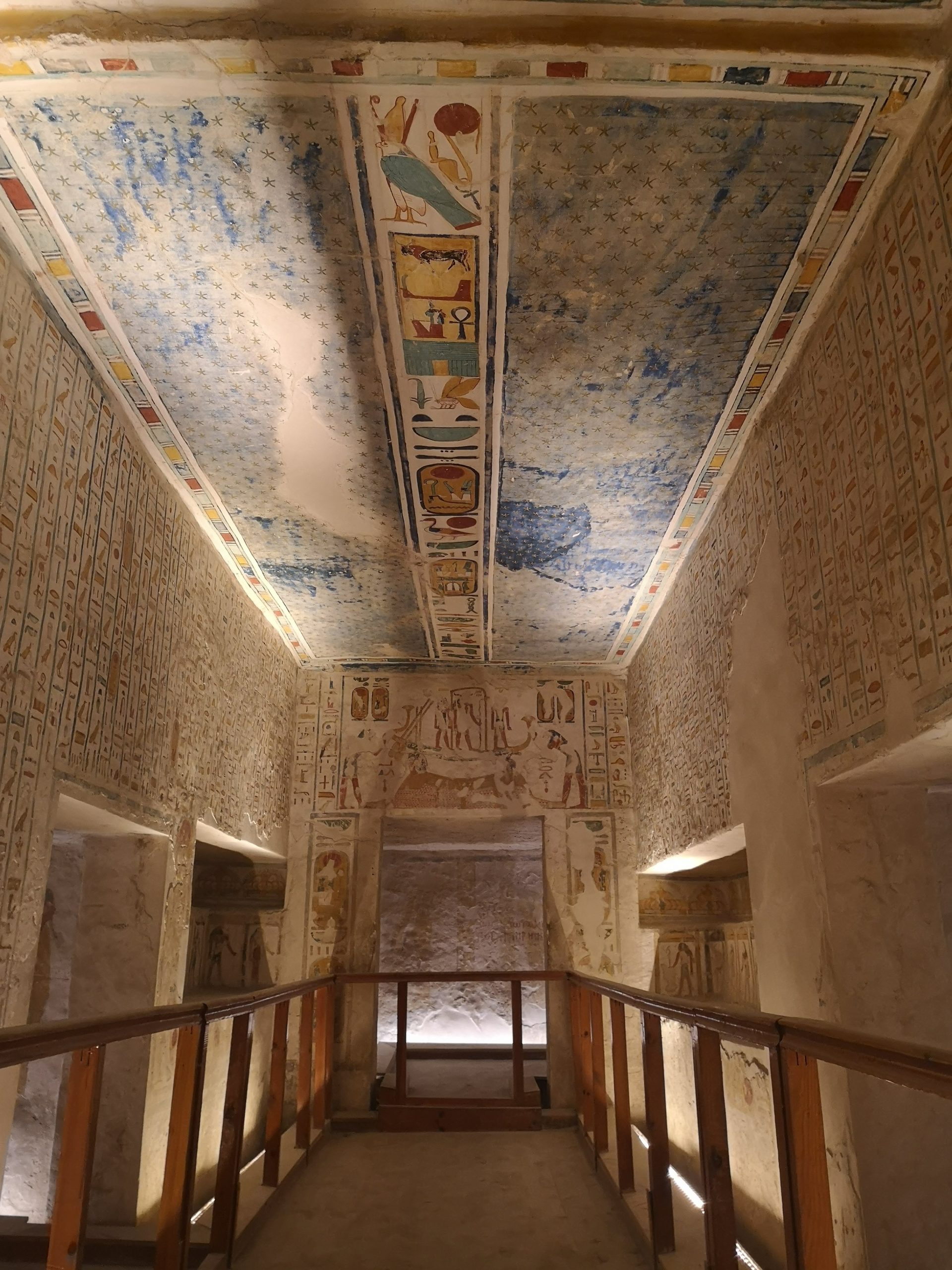
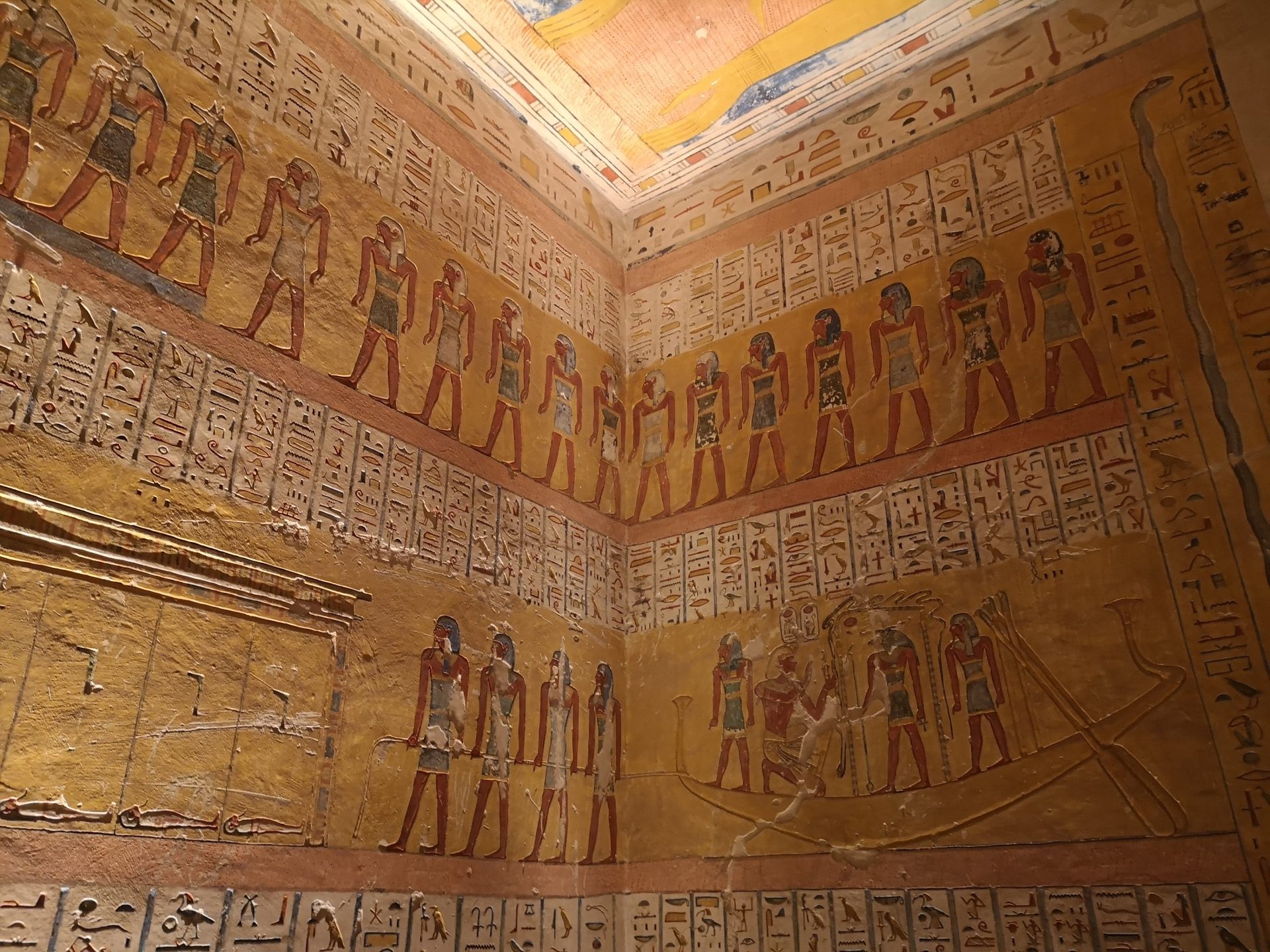
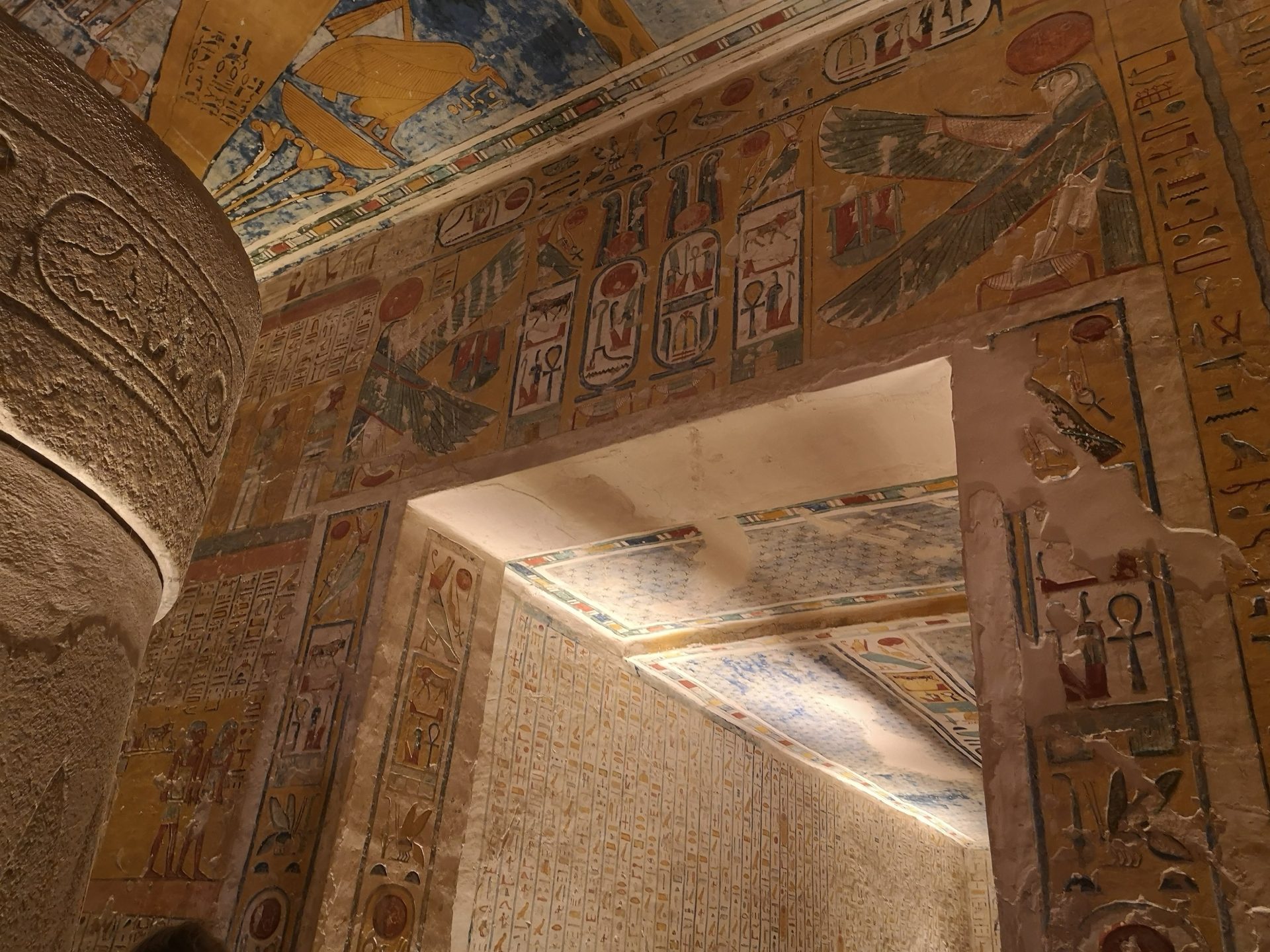
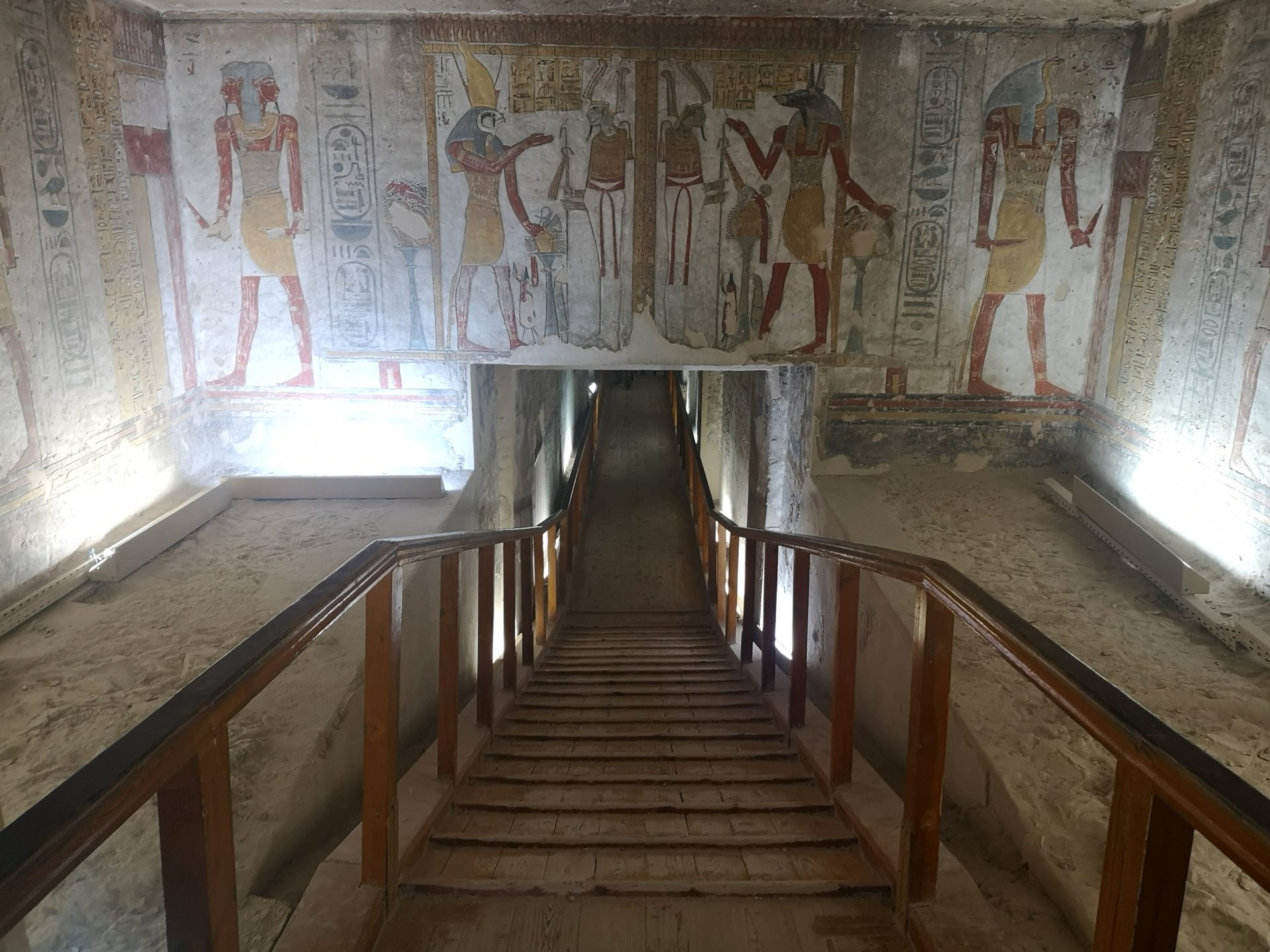
Queen Hatshepsut Temple
Also known as the Temple of Deir Al- Bahri is one of the most striking architectural masterpieces I have seen after the Karnak Temple. Especially when you get to know the history of the queen Hatshepsut who ordered it. Her mortuary temple was strategically placed on the west bank of the Nile next to the Temple of Mentuhotep II to reinforce her position among kings. Her temple was decorated with scenes from her reign and housed shrines to Annubis, Hathor, Re and Amun.
Hatshepsut was the eldest daughter of King Thutmose I, she first assumed the role of queen regent during the 18th dynasty after the death of her husband, Thutmose II. Although her stepson, Thutmose III, eventually came of age, she adopted the title of a pharaoh and ruled for more than two decades. This made her one of ancient Egypt’s first female pharaohs. Statues of her also evolved, depicting her with a male body in full pharaonic attire, including the traditional beard.
Below is her temple
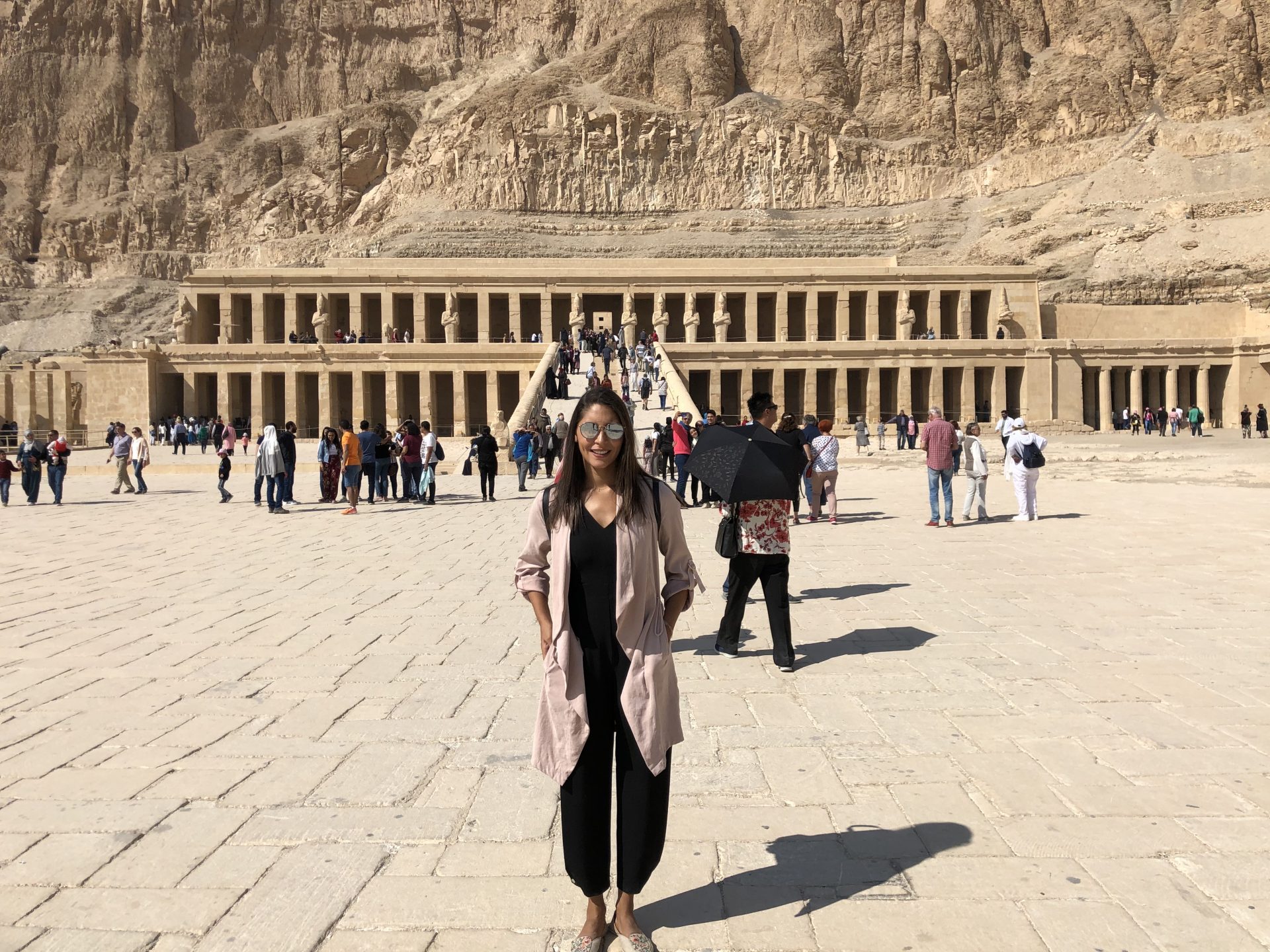
Medinet Habu
Medinet Habu is also a great architectural temple. It is highly decorated and it should be on your west bank list of places to visit. It was enlarged in the 18th dynasty to build the great temple of Ramses III associated with a royal palace. The main temple areas were built exactly on the model of the Ramasseum and dedicated to Amun.

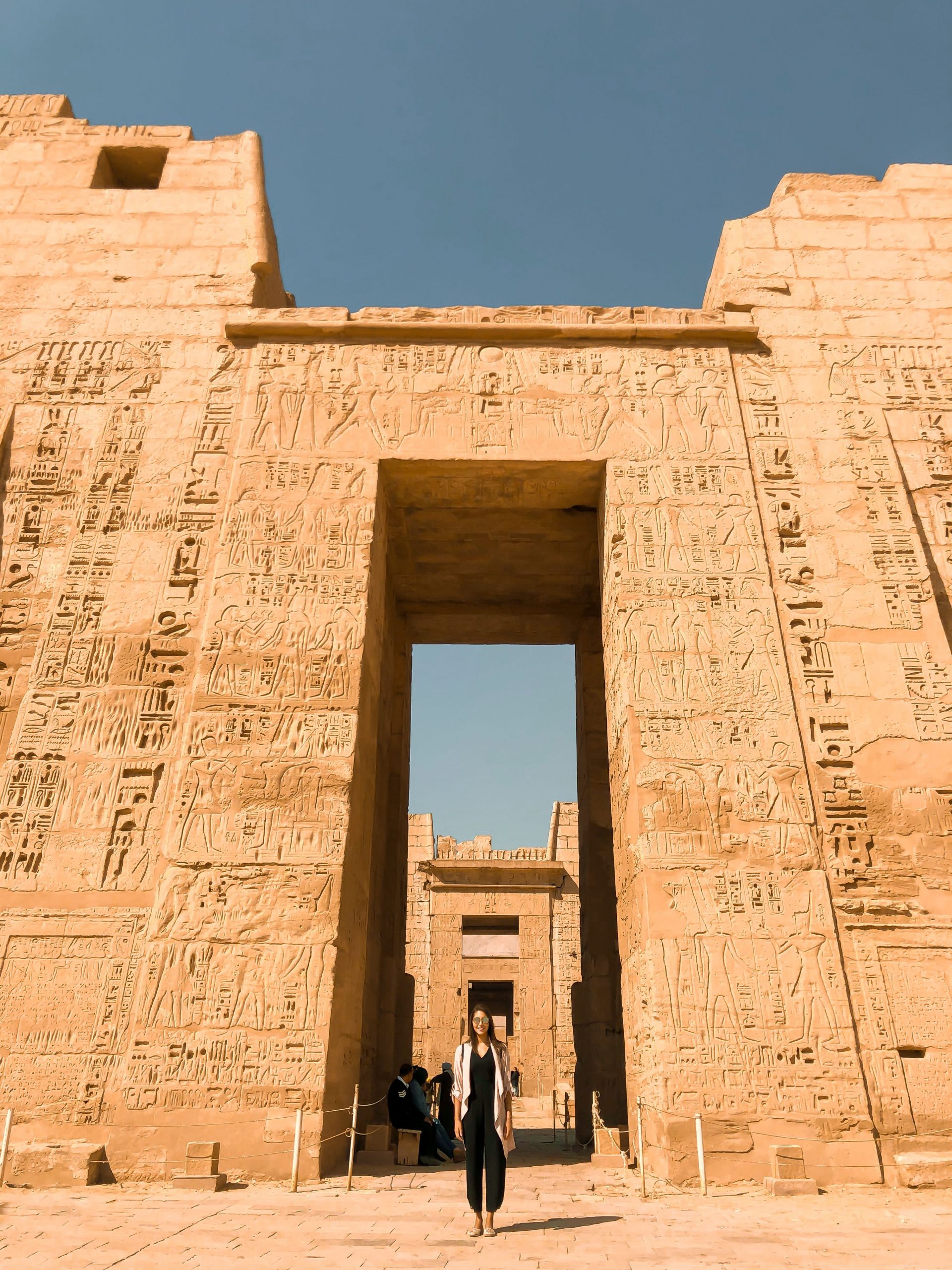
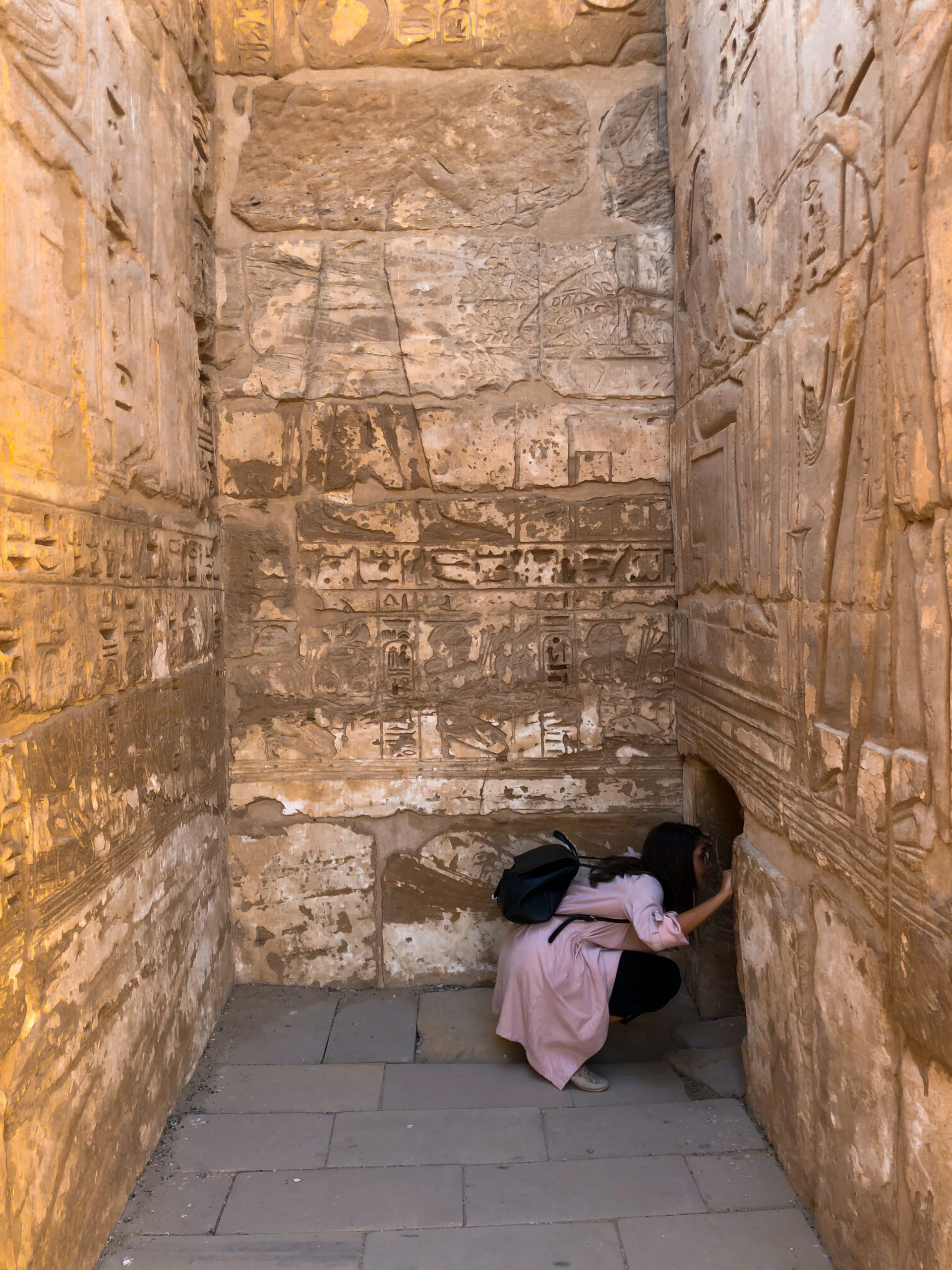
Hot air balloon in Luxor
If you like adventure and especially if you are looking for an aerial view of the west bank, view over the Nile River and the valley of the Kings at sunrise, then the hot air balloon experience is for you. In order not to pay an expensive rate for this activity, better go to one of the hot air balloon company and book directly from them on the west bank. Be ready to be a morning person as it is an early morning activity in order to catch the first light of the sunrise.
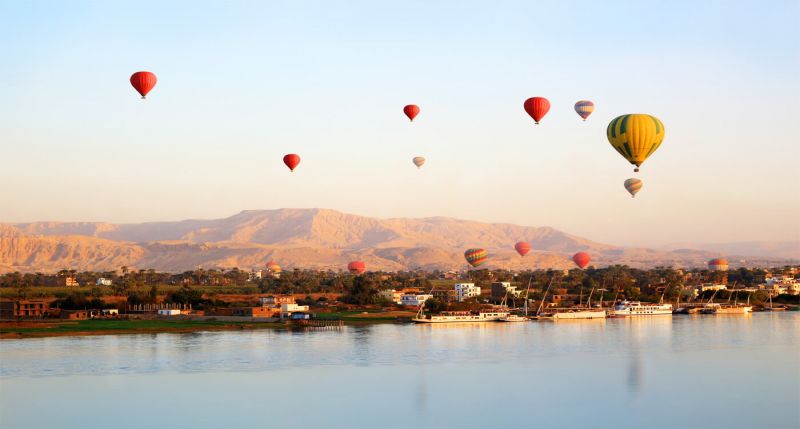
GIZA
The Pyramids of Giza
The pyramids in Giza are some of the most impressive structures that human beings have ever built. Their gigantic size almost incomprehensible level of sophisticated architecture has dazzled anyone who lays their eyes on them. How did human beings cut, extract, shape, move, lift and place huge limestone blocks, some of which weigh over 90 tones? The pyramids are the grandest tomb possible. They were royal tombs built for the three different pharaohs, Khufu, Khafre and Menkaure. The oldest pyramid of the group was built for Khufu, the second king of the 4th dynasty. The middle pyramid was built for Khafre, called the Great Pyramid, it is the largest of the three. The length of each side at the base averaging 230 meters and its original height 147 meters. The southern and last pyramid to be built was that of Menkaure.
The other three small pyramids were used for burials of other members of the royal family.
The entrance ticket to the plateau of Giza allows you to walk freely around all the pyramids and to go into the tombs as well. It does not include a camel ride or horseback ride. Just be careful of the people who will walk by your side ask to take your photos and invite you for a camel ride. There is a saying “it cost 10 EGP to get on a camel and 1000 EGP to get off” so beforehand if you really want to do the camel ride agree with the people on how much you will pay them for the ride.
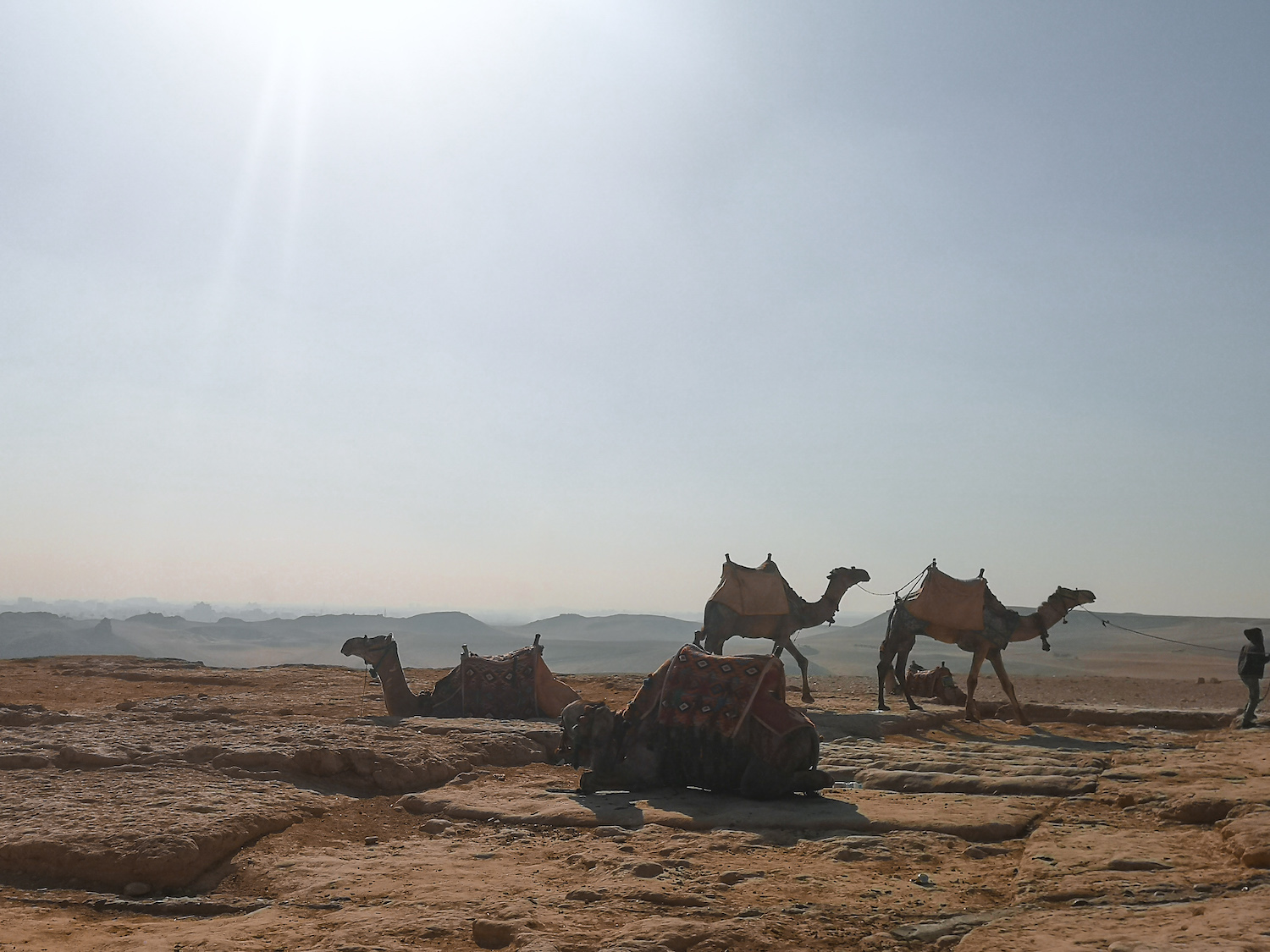
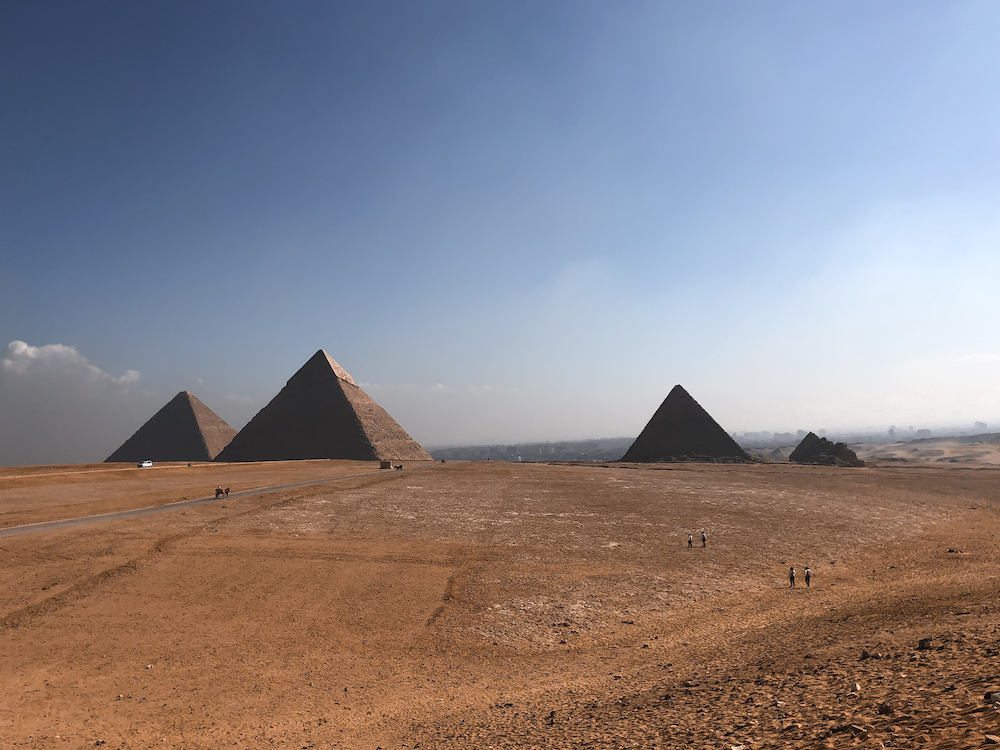
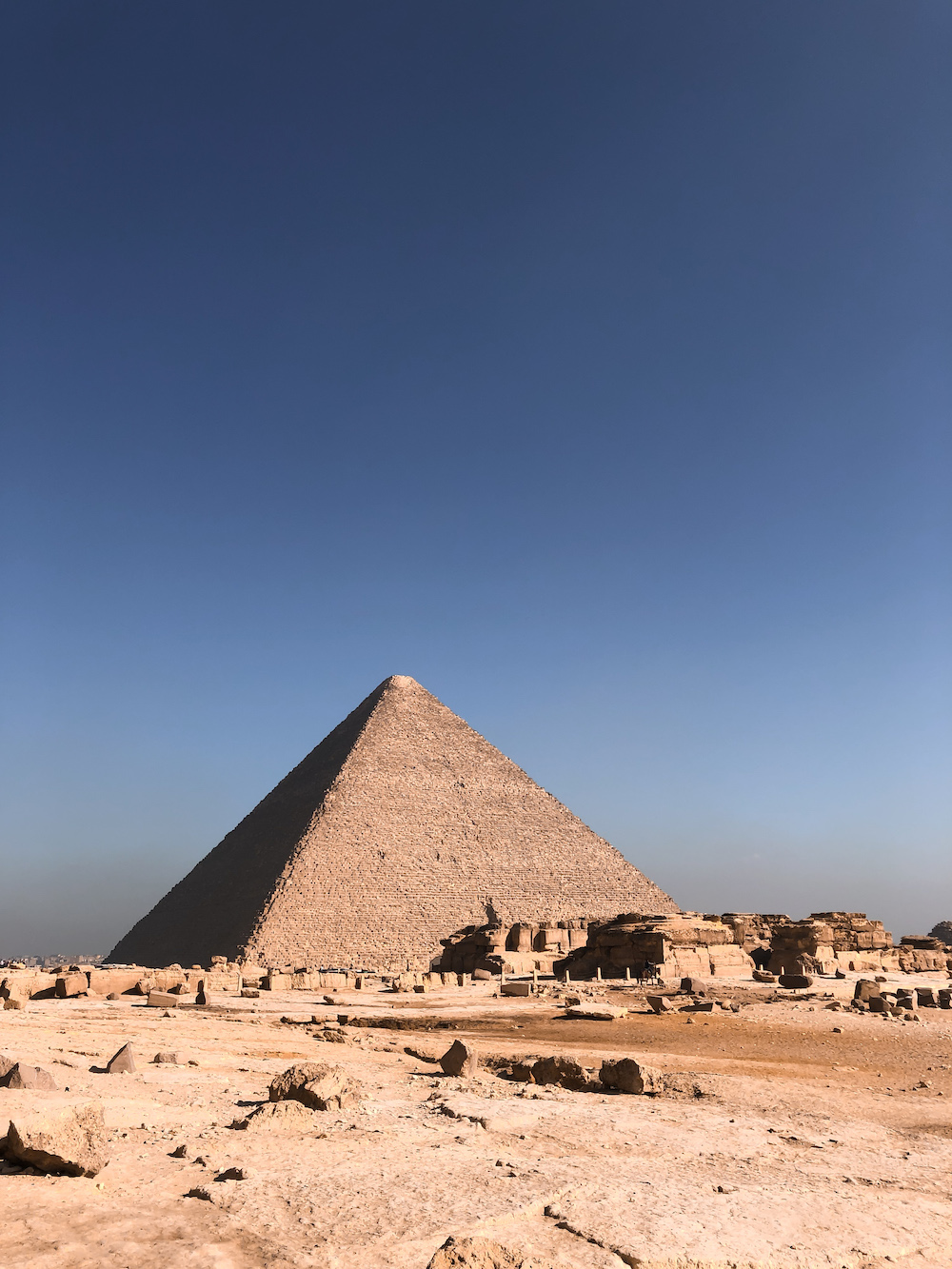
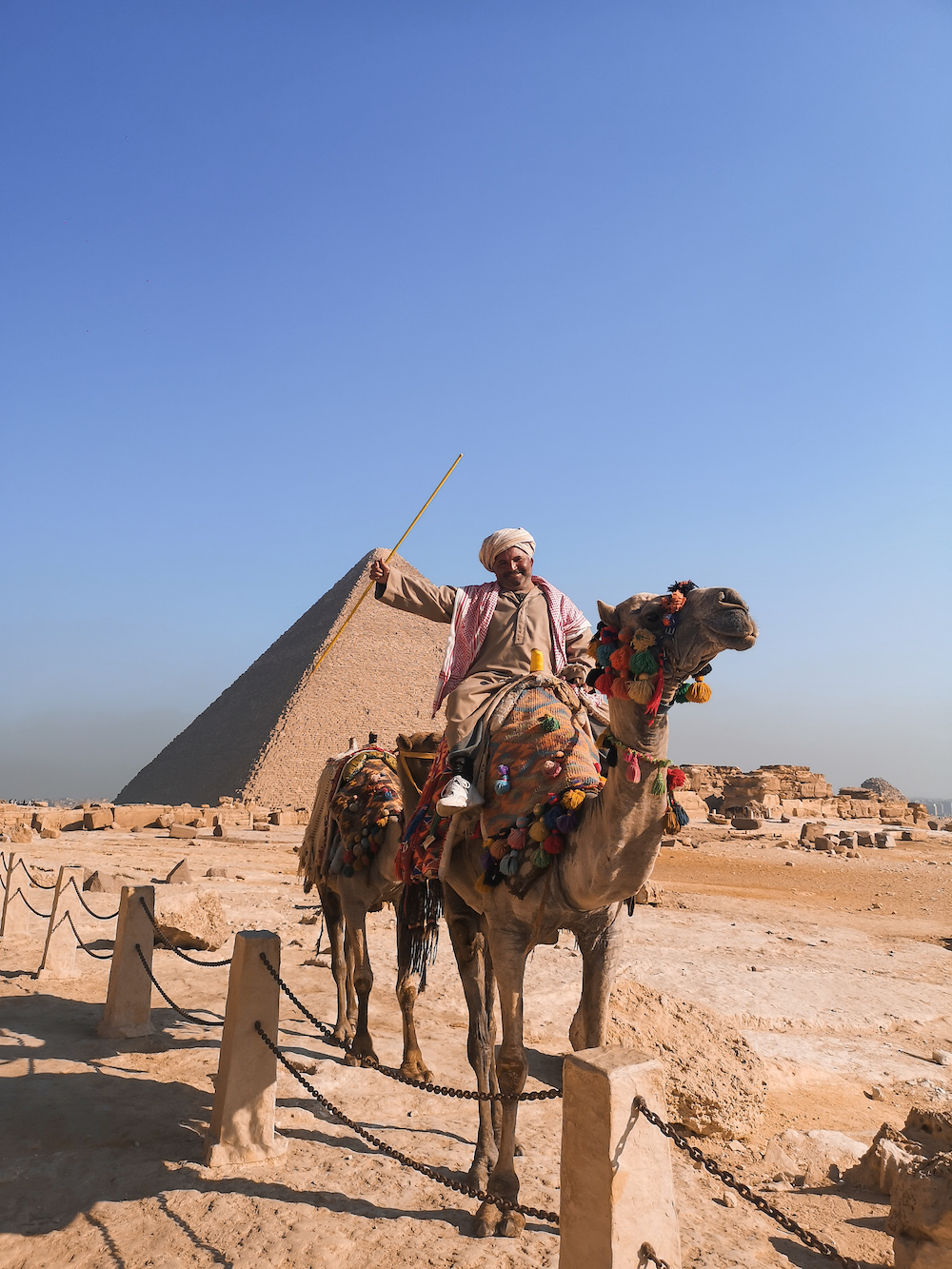
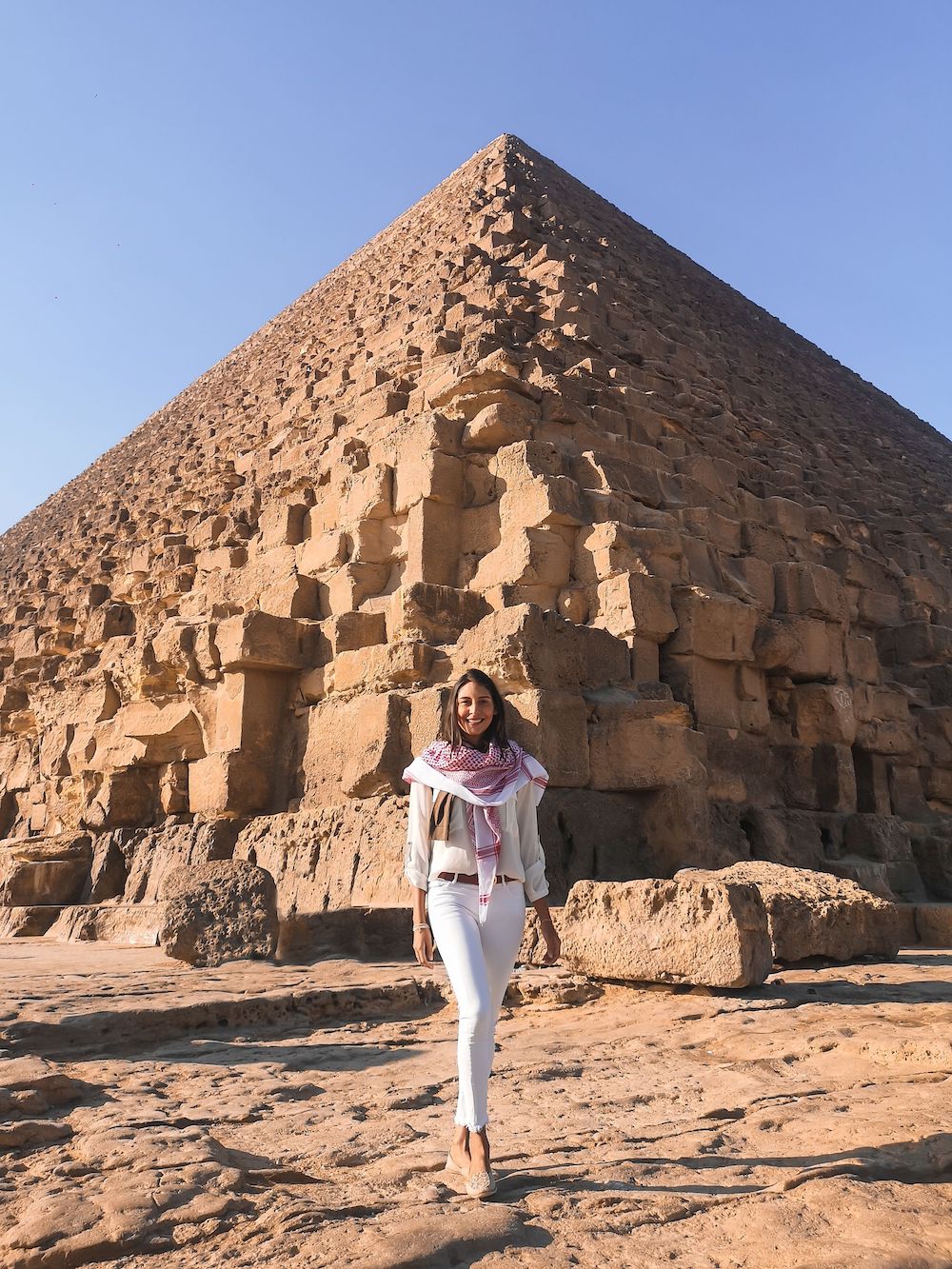
CAIRO
Like all capital cities, Cairo is no exception. With its 21 million inhabitants, the streets are always busy and with crazy traffic.
THE EGYPTIAN MUSEUM IN CAIRO
No Egypt tour is complete without a visit to the Egyptian Museum in Cairo. This is the biggest museum you will find in Egypt; it connects both pieces of the old and the new Egyptian Kingdom, more than 140,000 items are on display. It is so big that you would need an entire day to see all of it.
It features the famous Tutankhamun collection with its beautiful gold death mask and sarcophagus and all of his artefacts. There is also a royal mummy room on the first floor which is an additional entrance fee.
The Grand Egyptian Museum known as the largest archaeological museum in the world is under construction and is scheduled to open in 2020 in Giza, about two kilometers from the Giza pyramids. Some of the exhibits have already been moved, at least when I visited, I could see some of the exhibits were being moved.
A lot of the treasures in Cairo Museum are not well labelled and create a lot of confusion in general, it would be better to have a guide to walk you through the Museum and point you the important things.
Anyhow, it is a must to visit the Cairo Museum even if you are not a museum person, you will be amazed by the ancient objects and pieces you could find there.

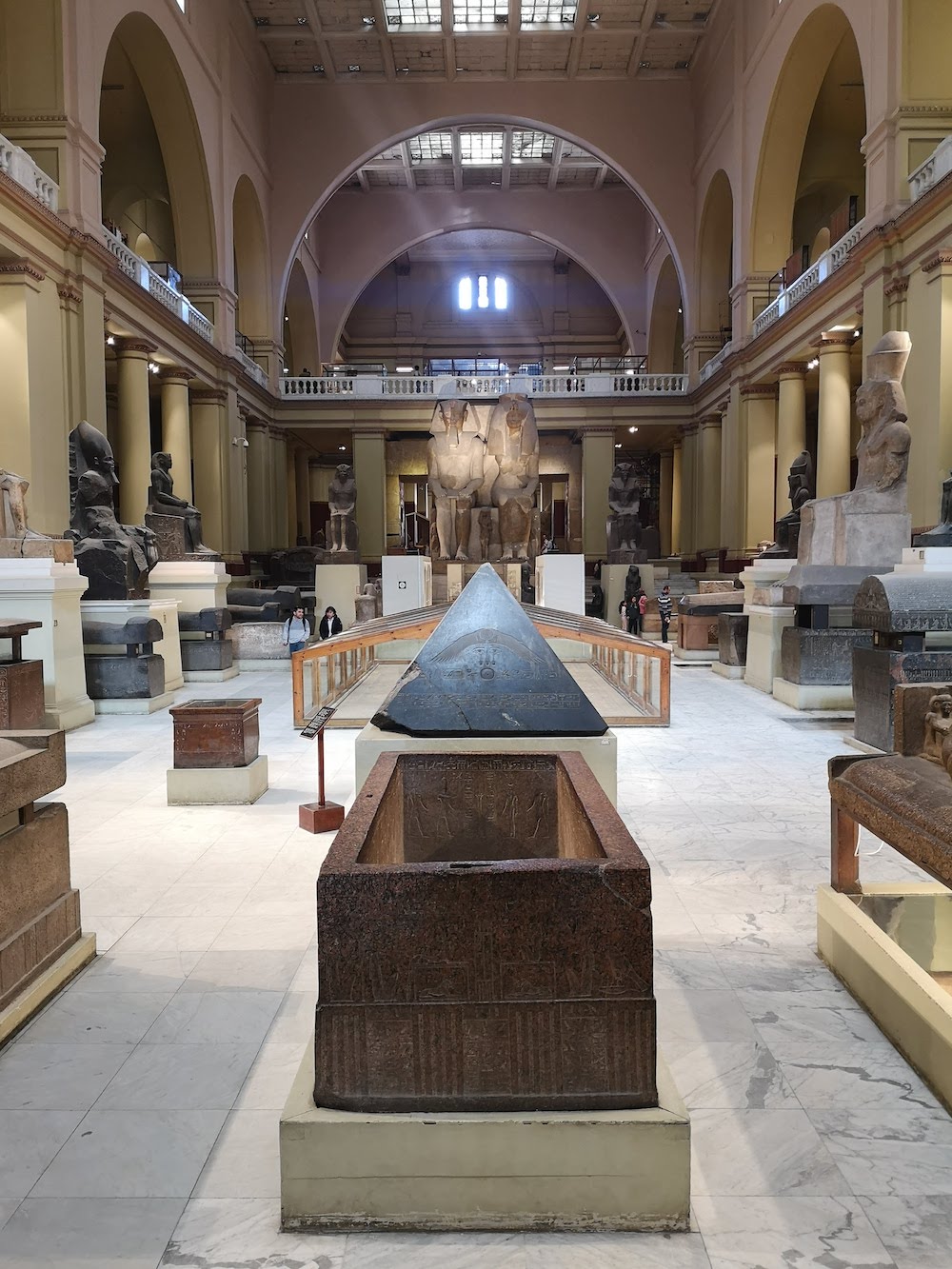
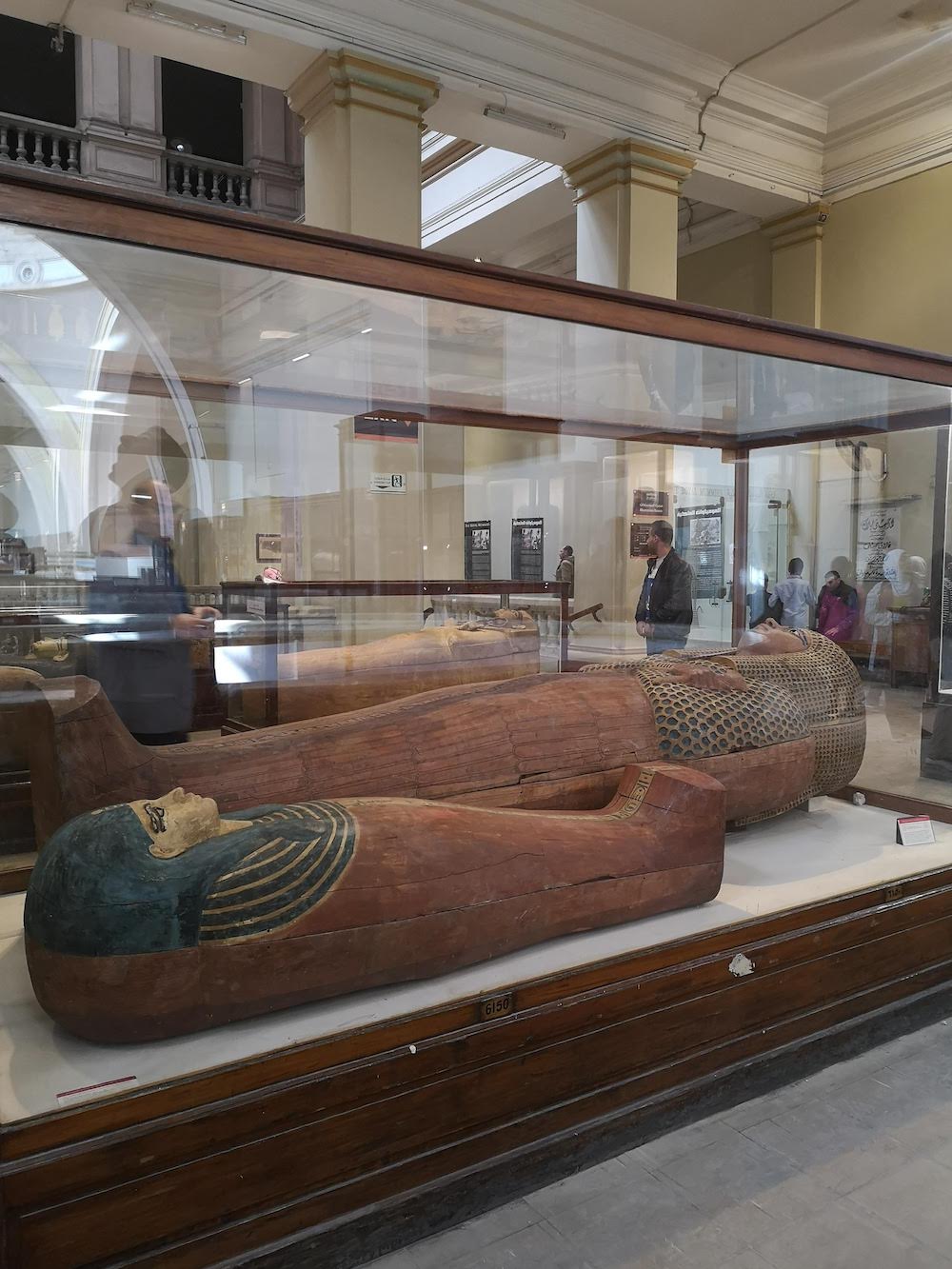
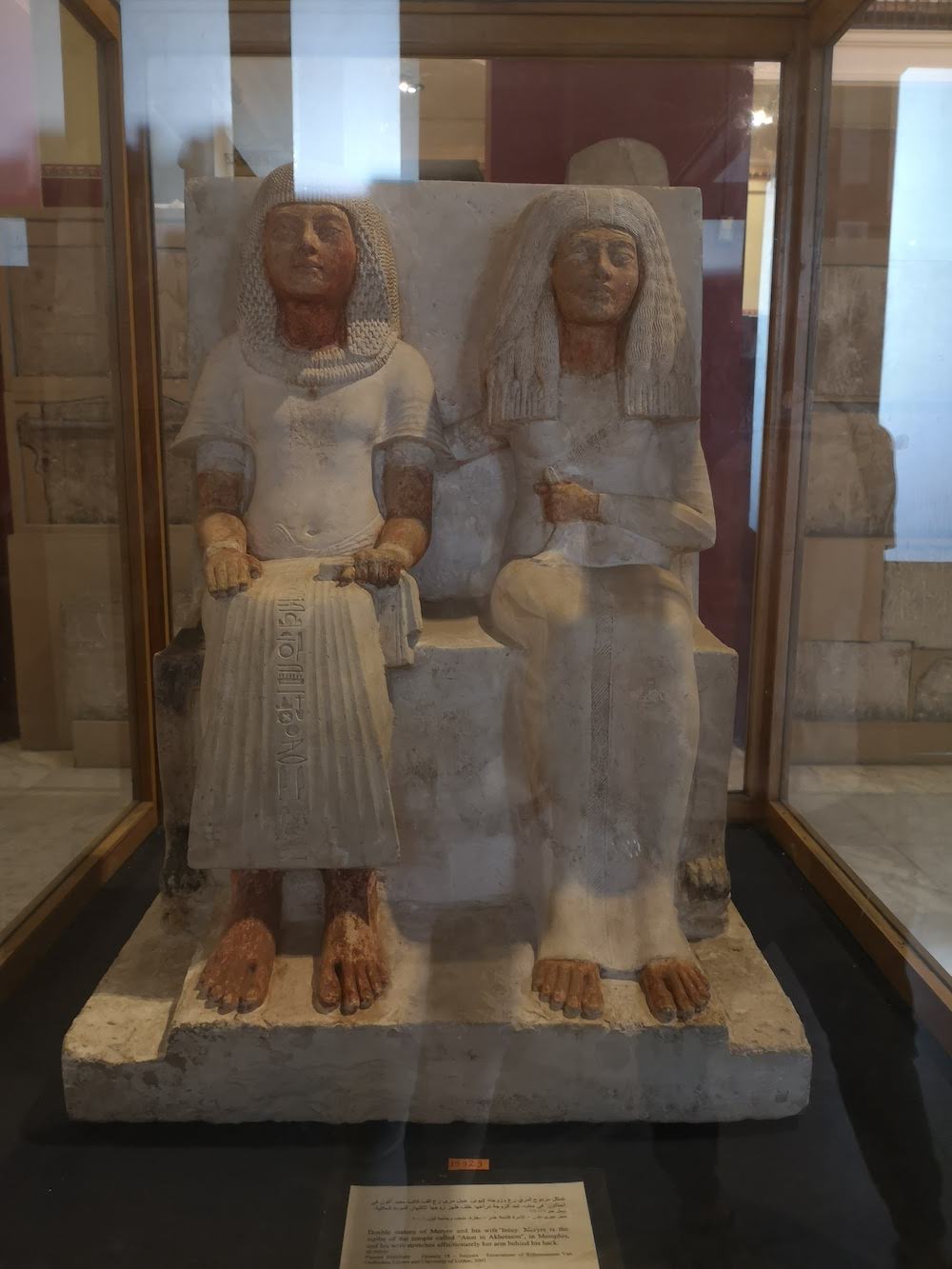
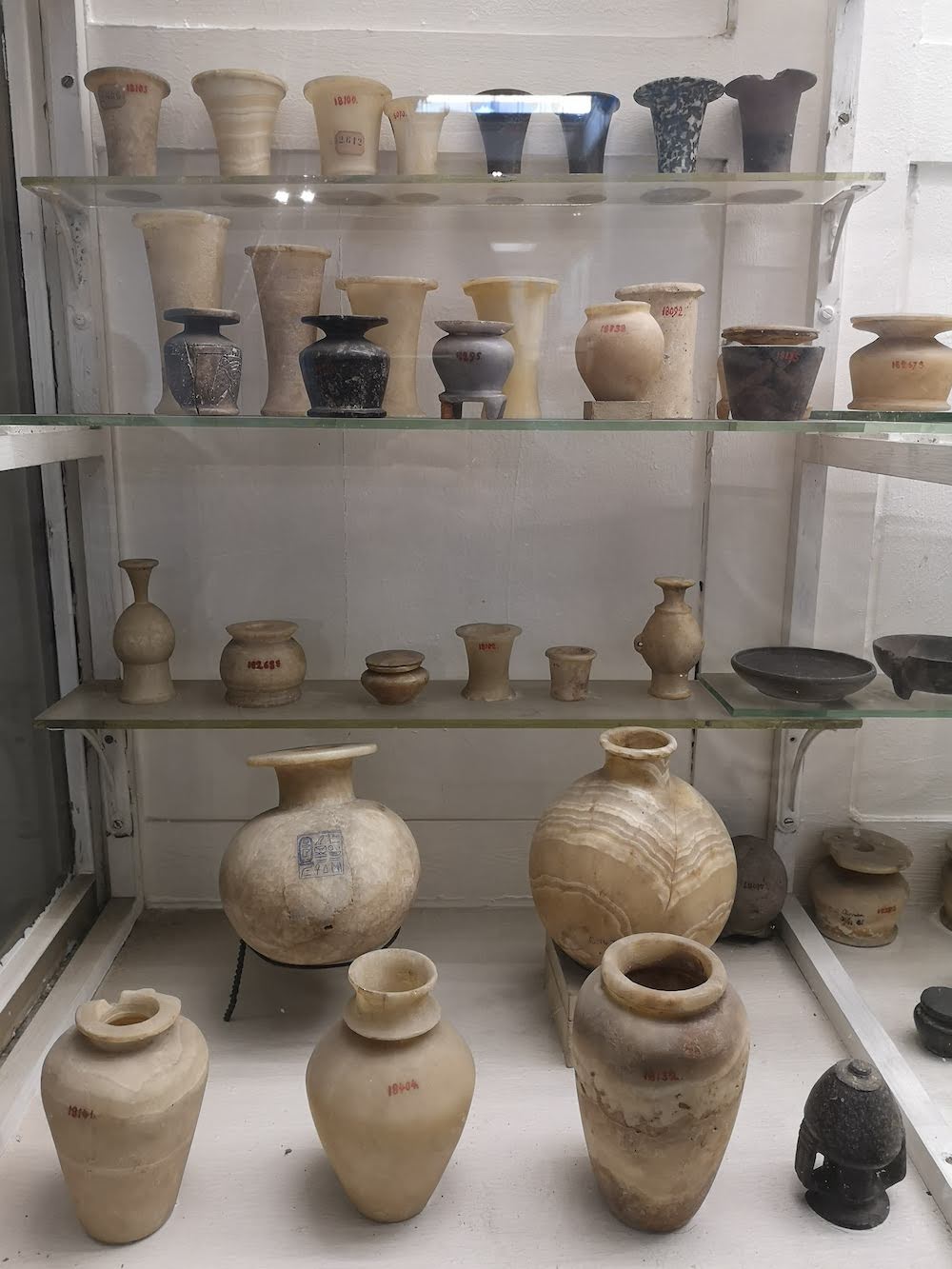
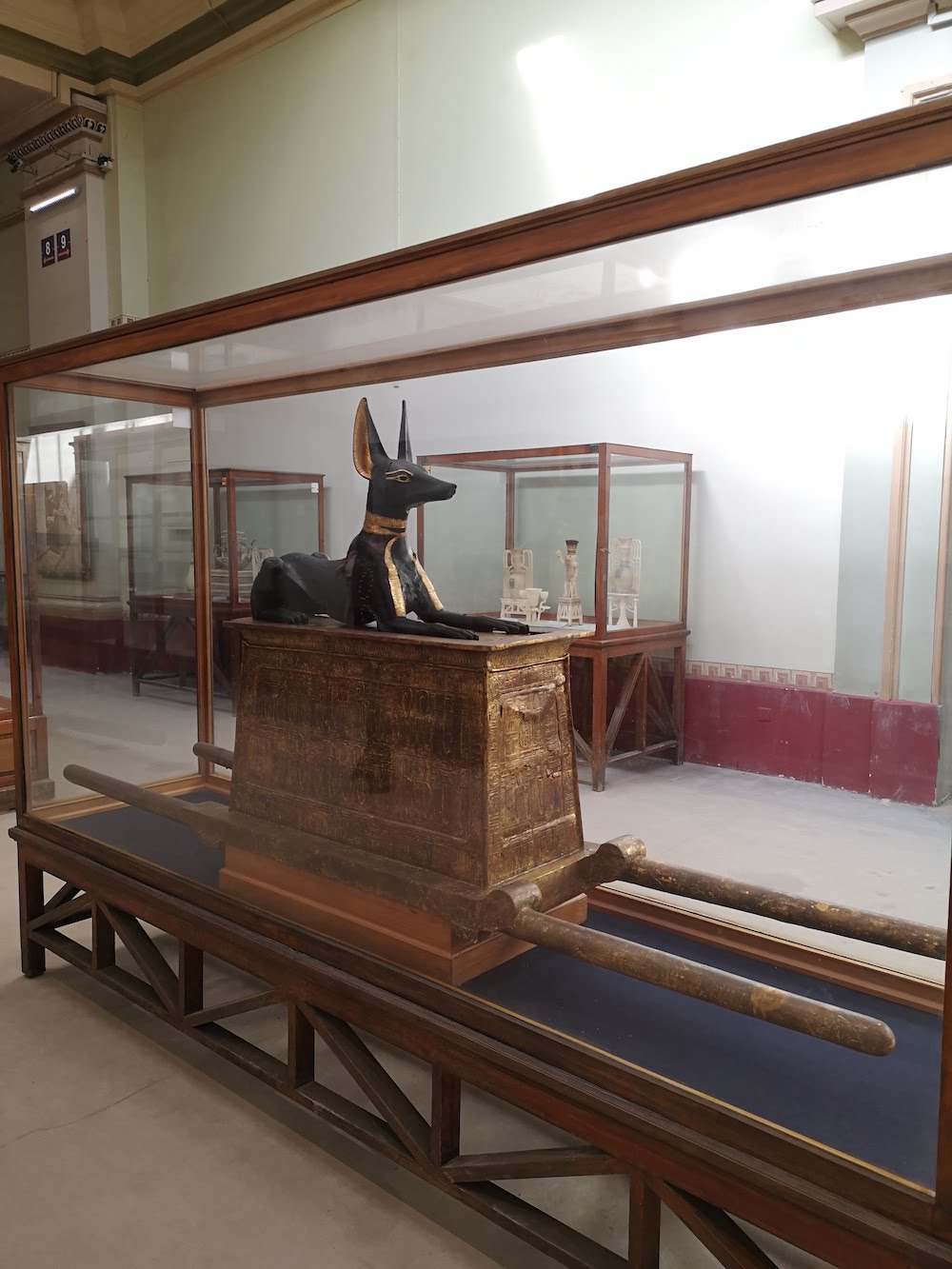
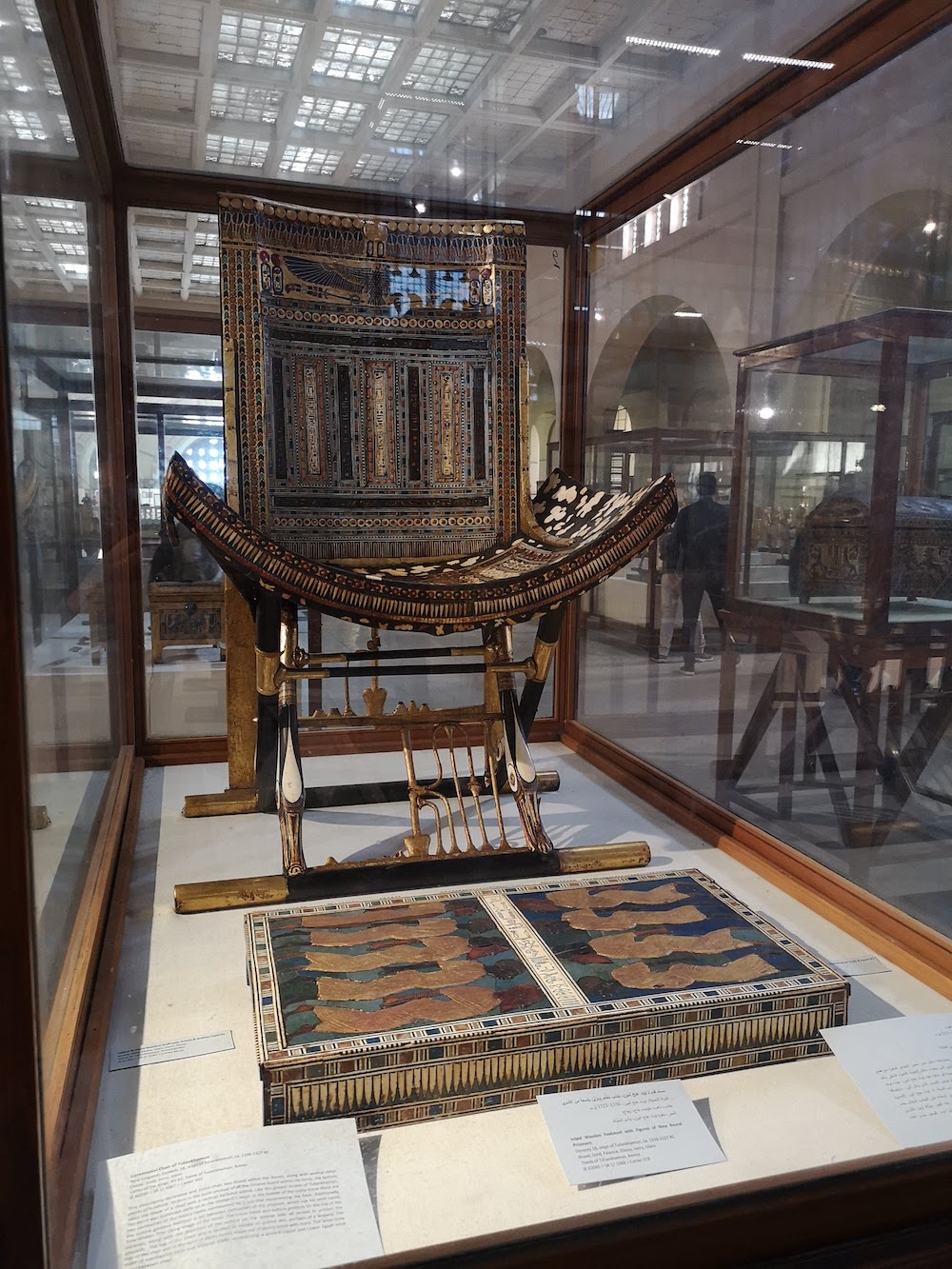
Other places of interest in Cairo:
- The Al-Azhar Mosque
- Al-Azhar park
- Old Cairo
- Khan El Khalili
- Downtown Cairo
- The Citadel
You could also do a cruise on the Nile river the entire way down to Aswan or even for a couple of days.
Here is my one-week itinerary in Egypt covering Cairo and Luxor. I hope this blog post has helped you in planning well your visit to the land of the pharaohs.
If you have any questions please do write to me in the comments section below. I also want to hear your personal experiences if you have been to Egypt.
With Love
xx Katia xx

Cuba – The classics keep rolling
Read MoreMy Life Saving Planners
Read MoreRodrigues Immersion
Read MoreMarhaba to Qsar Al Sarab
Read MoreGracious living Lifestlye
Read More